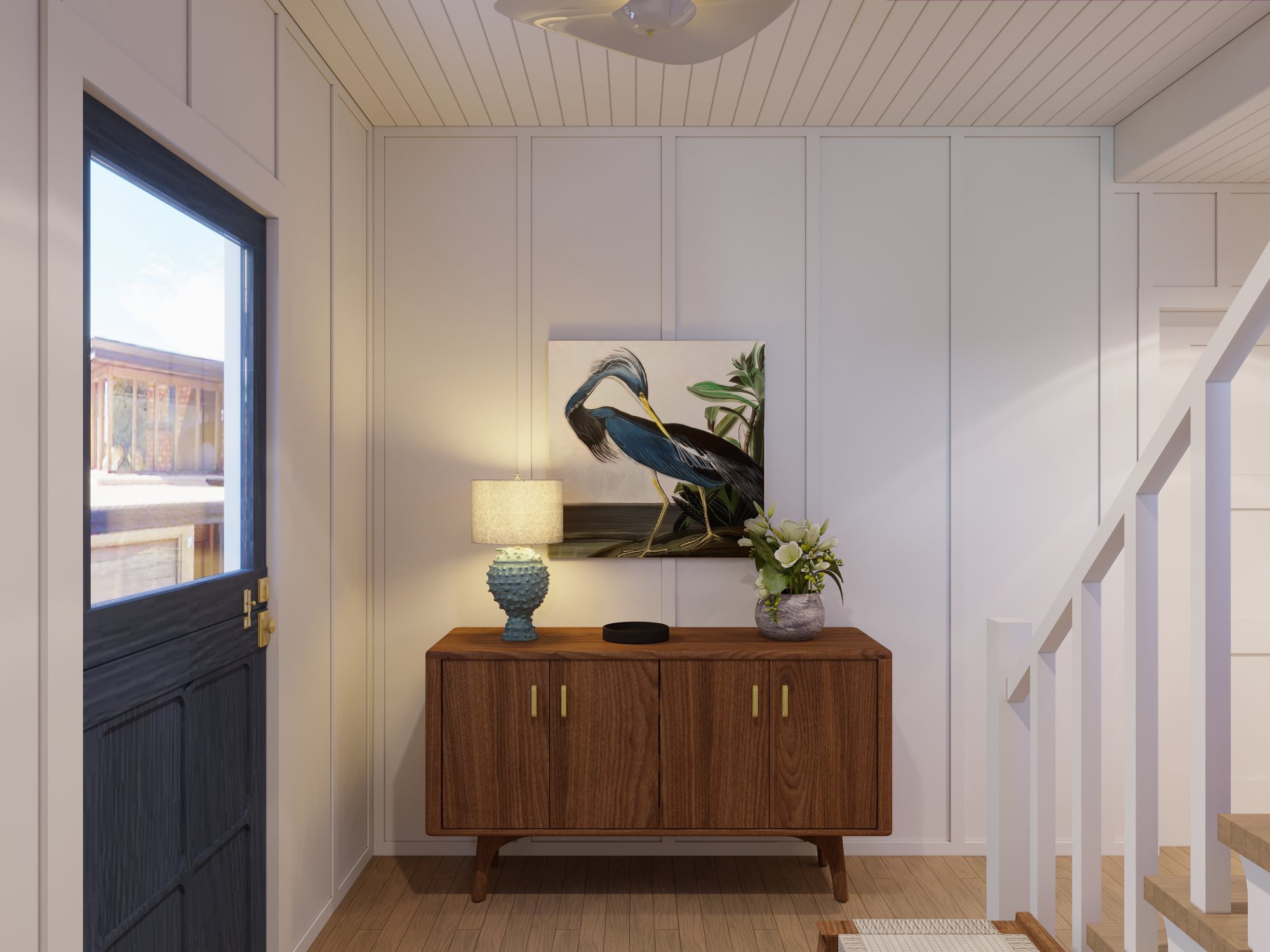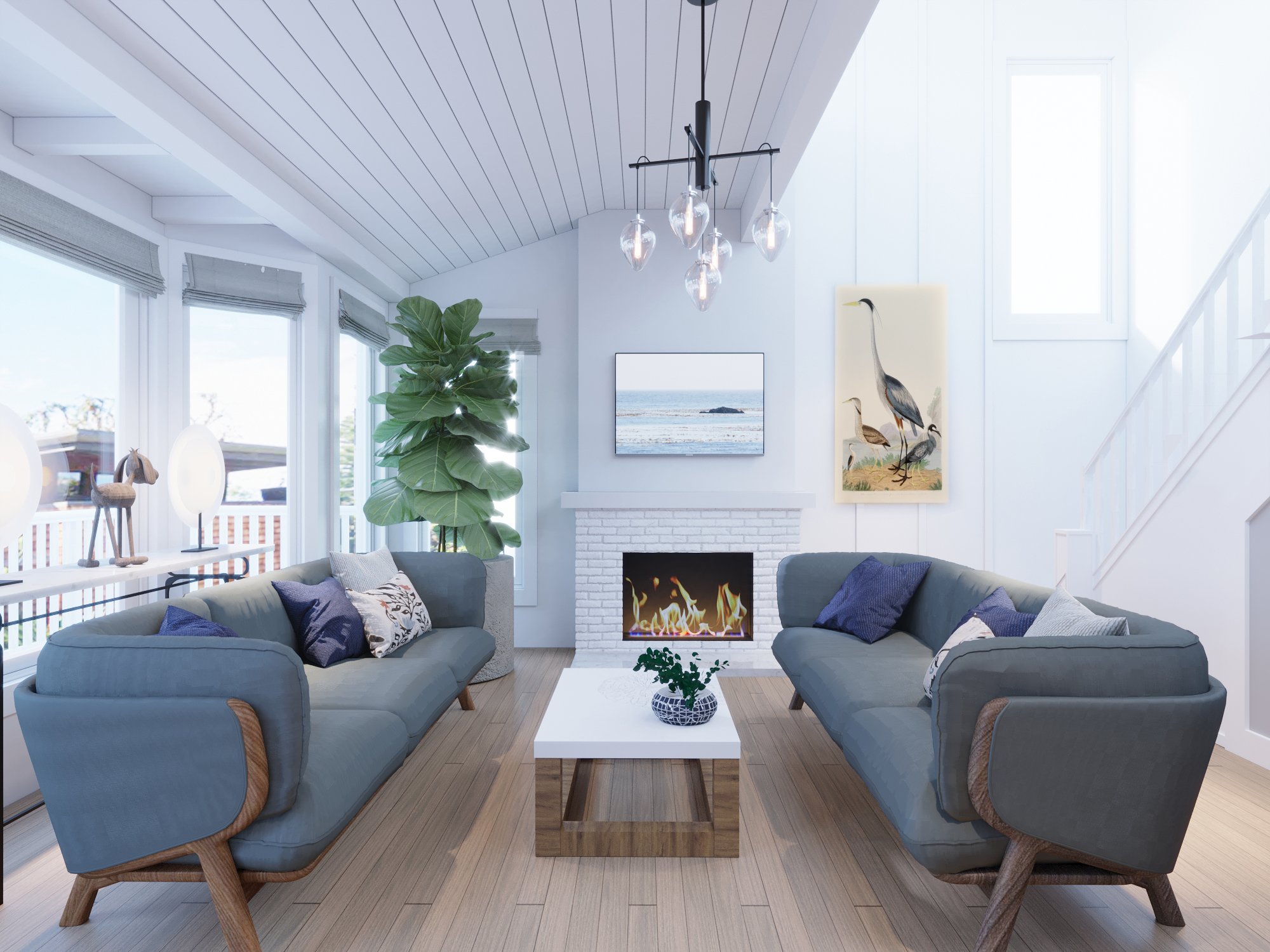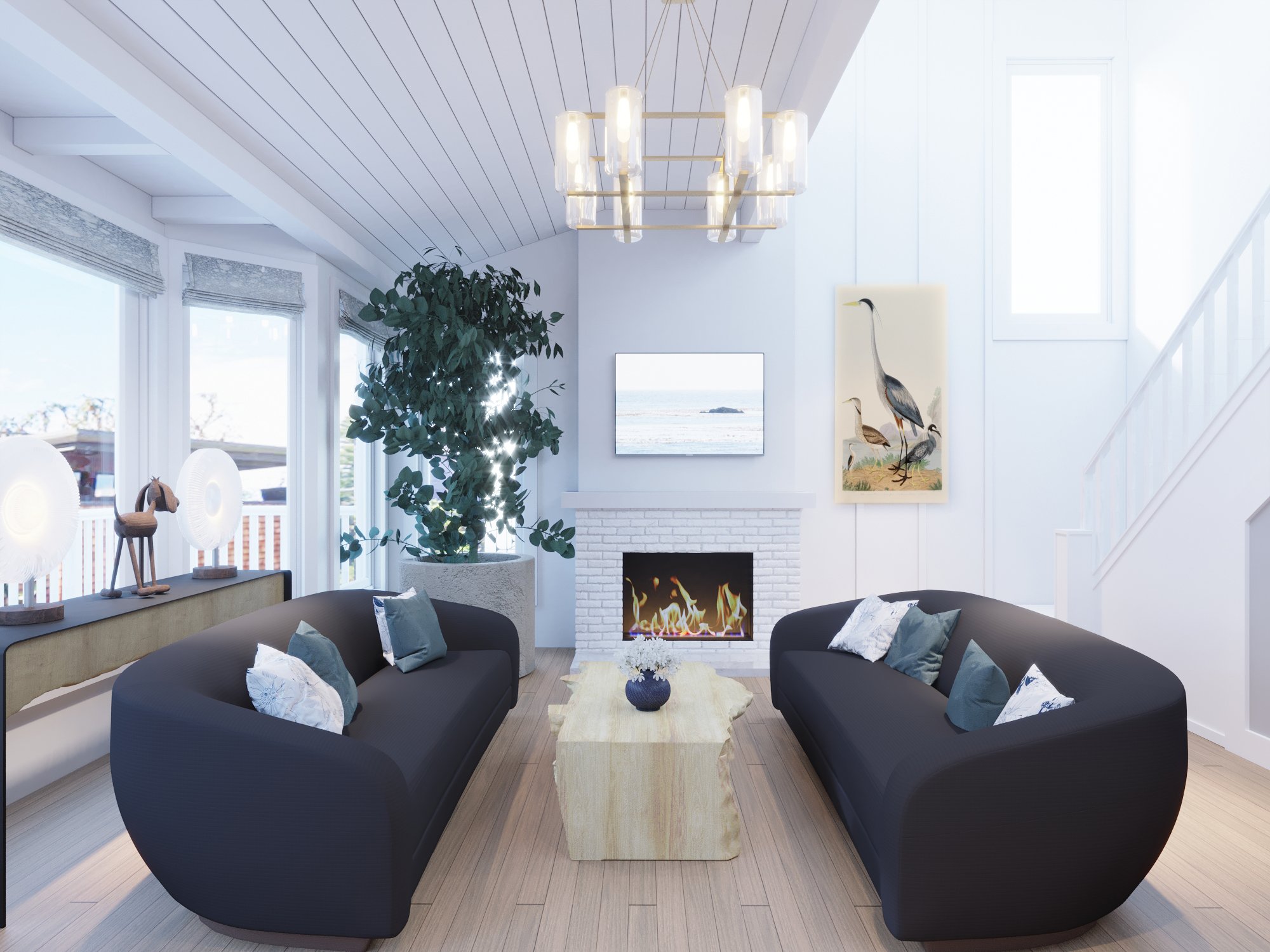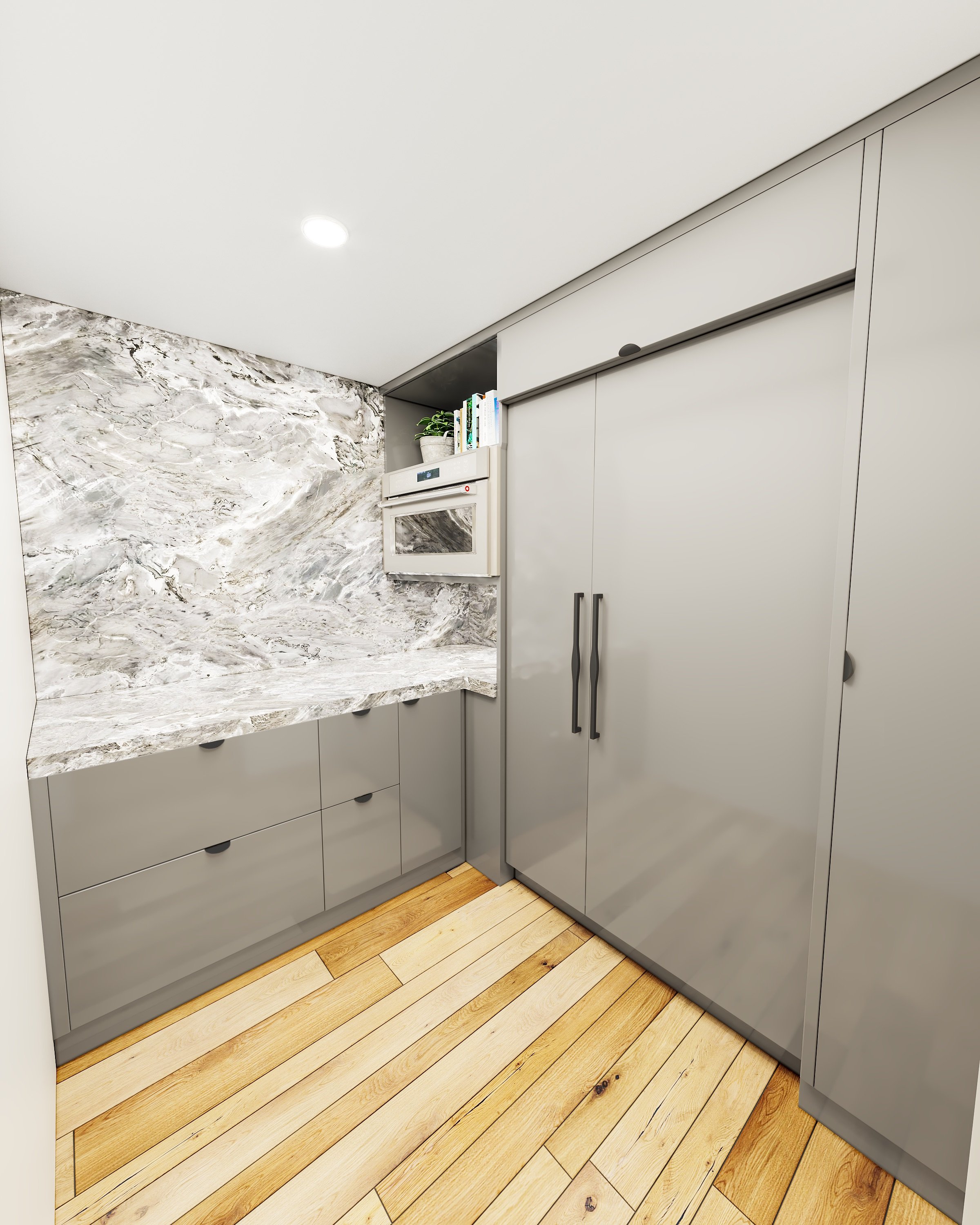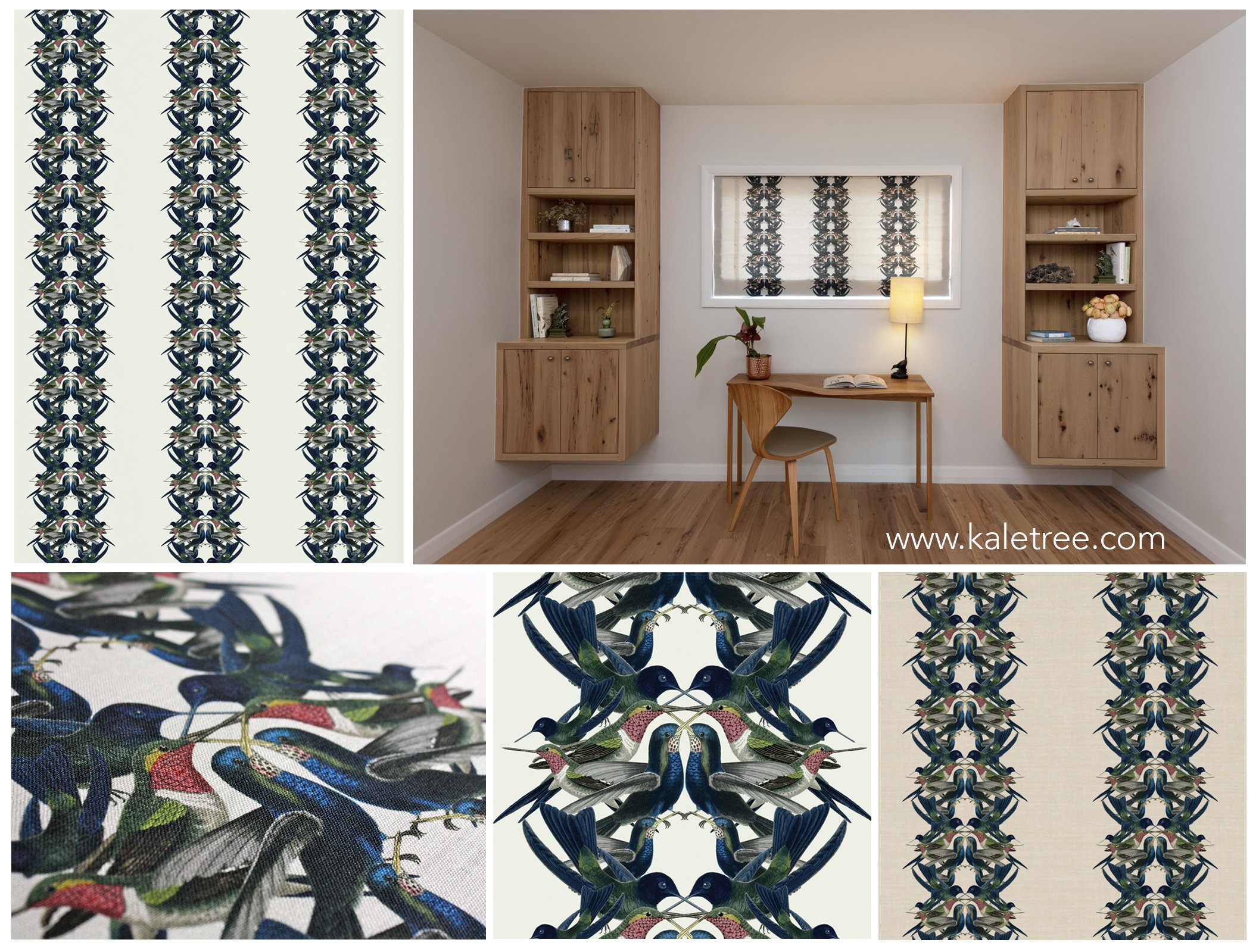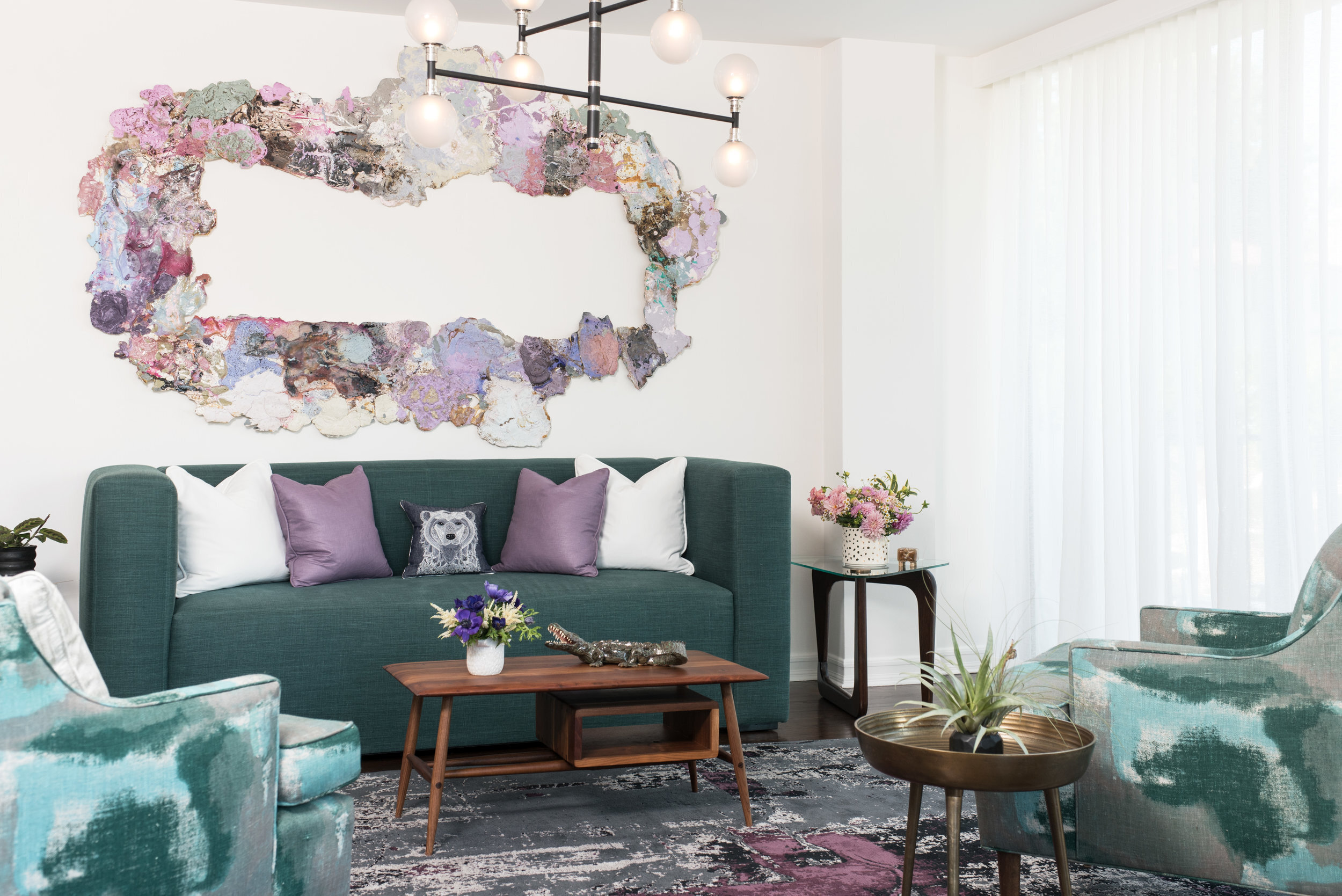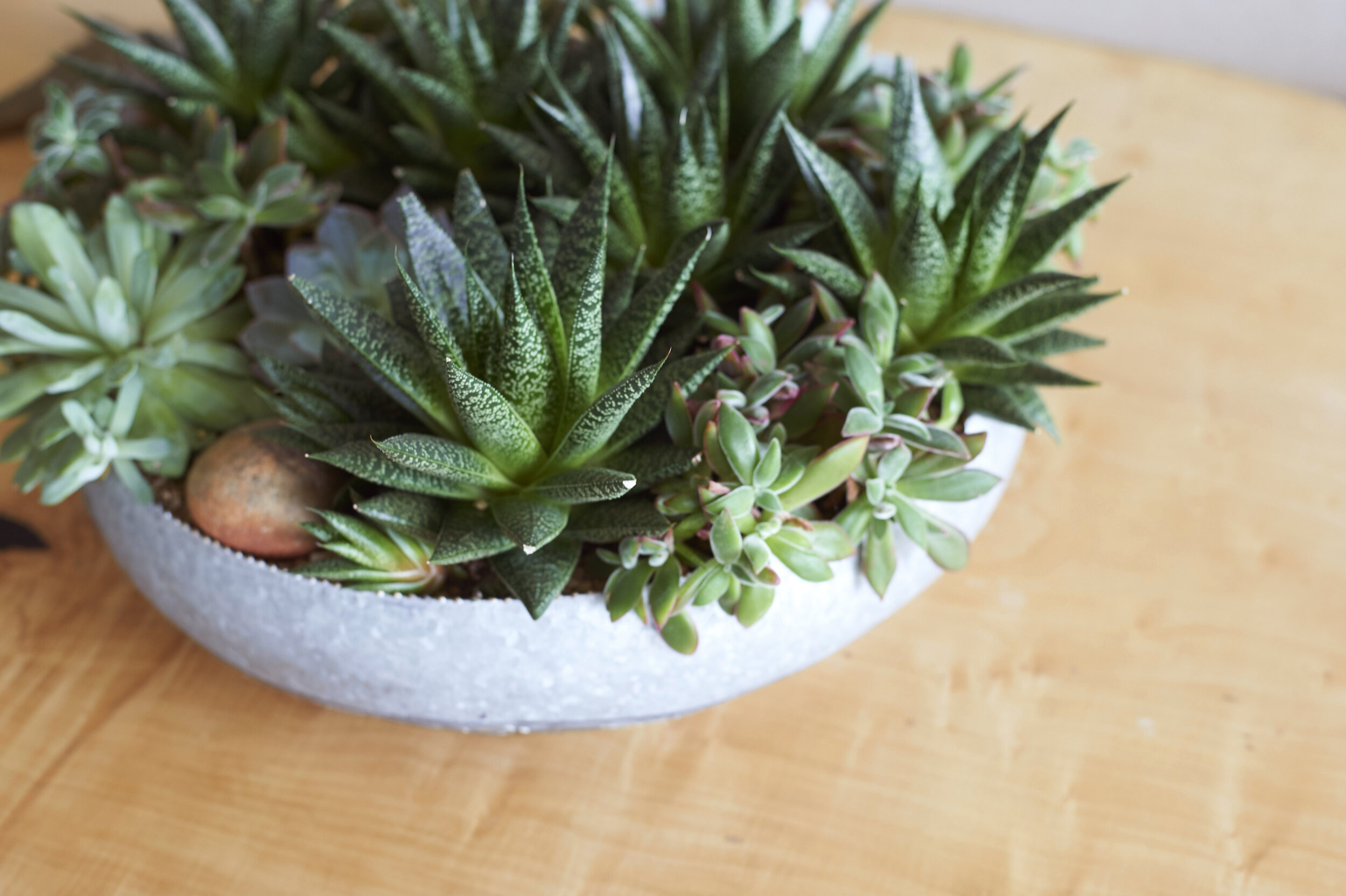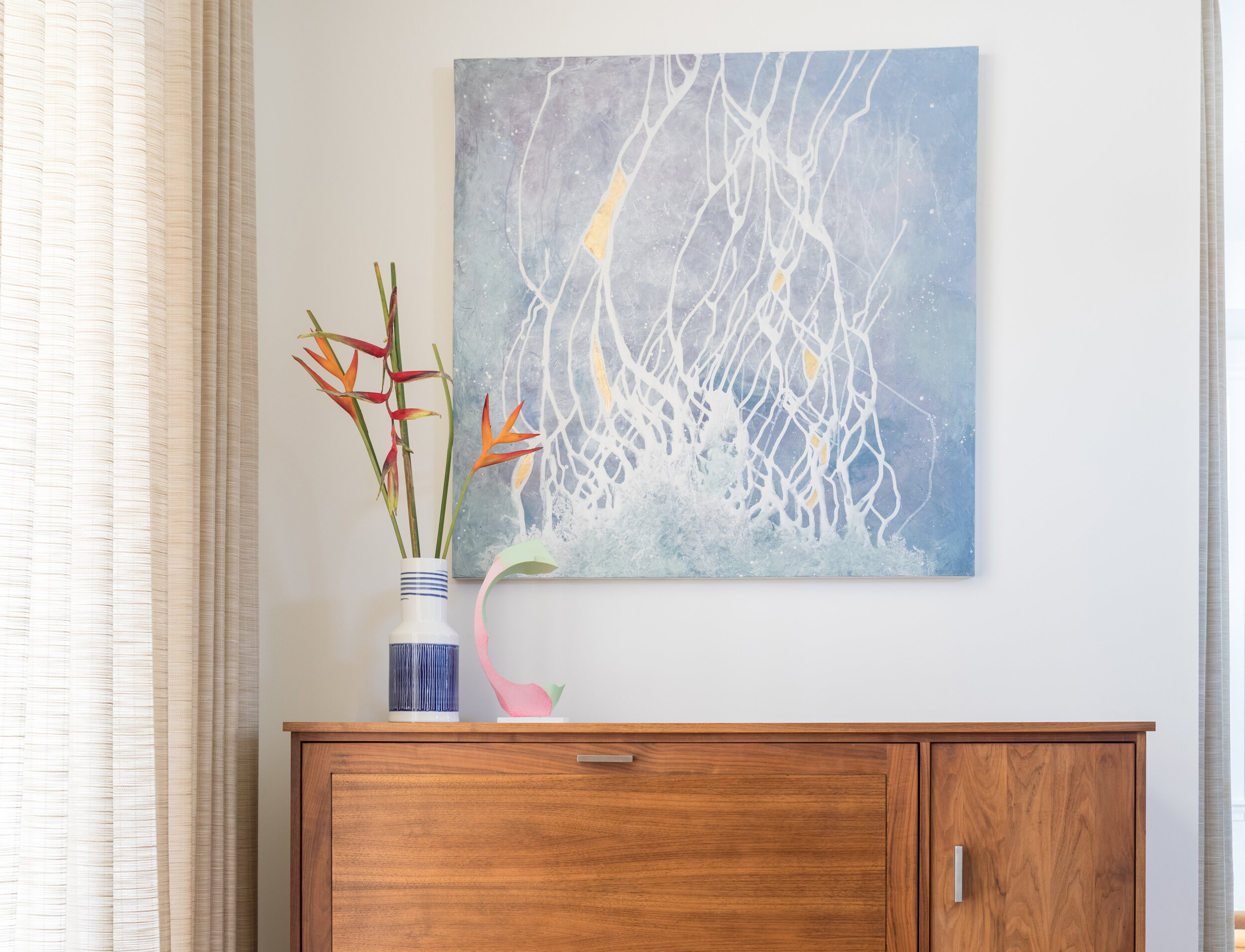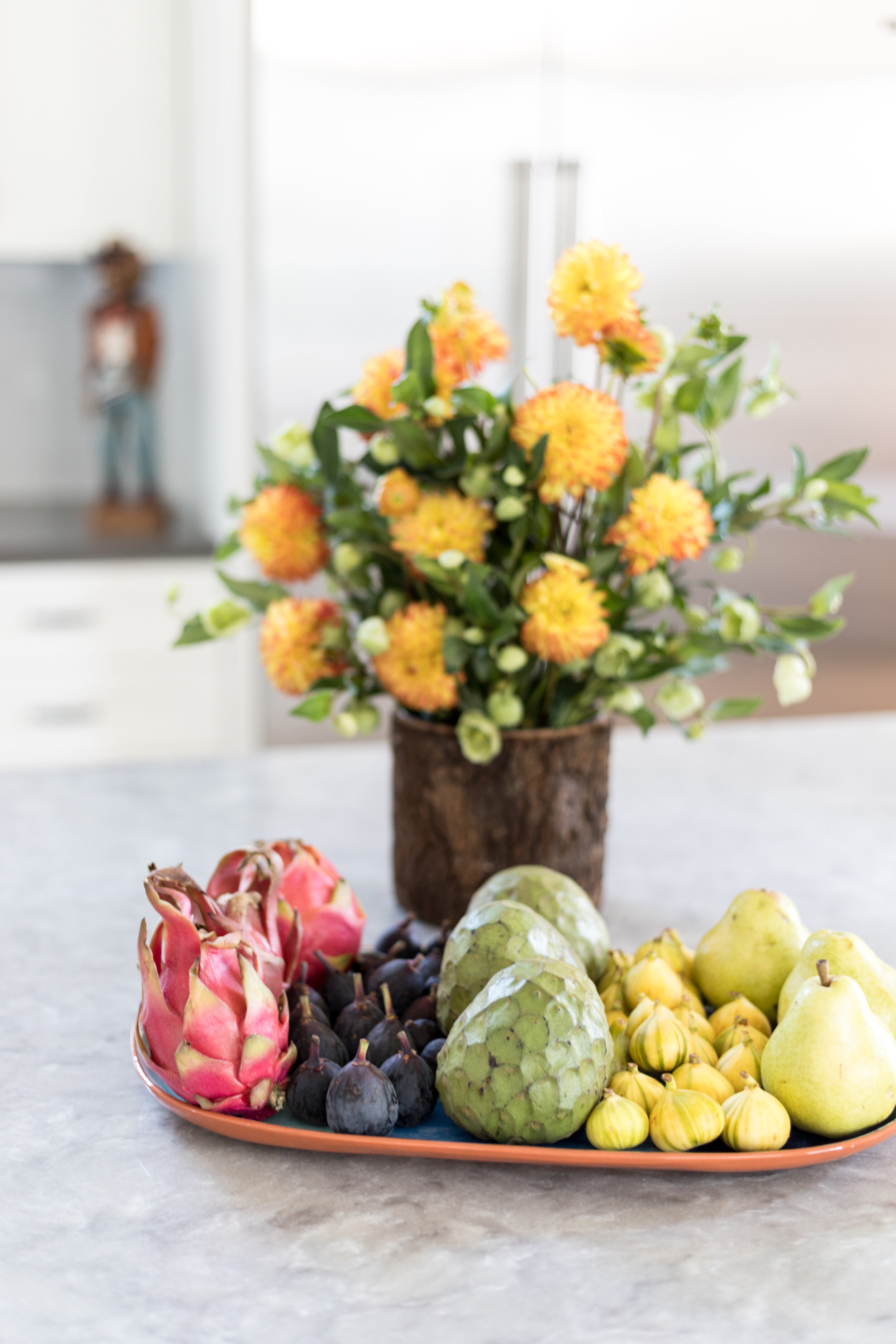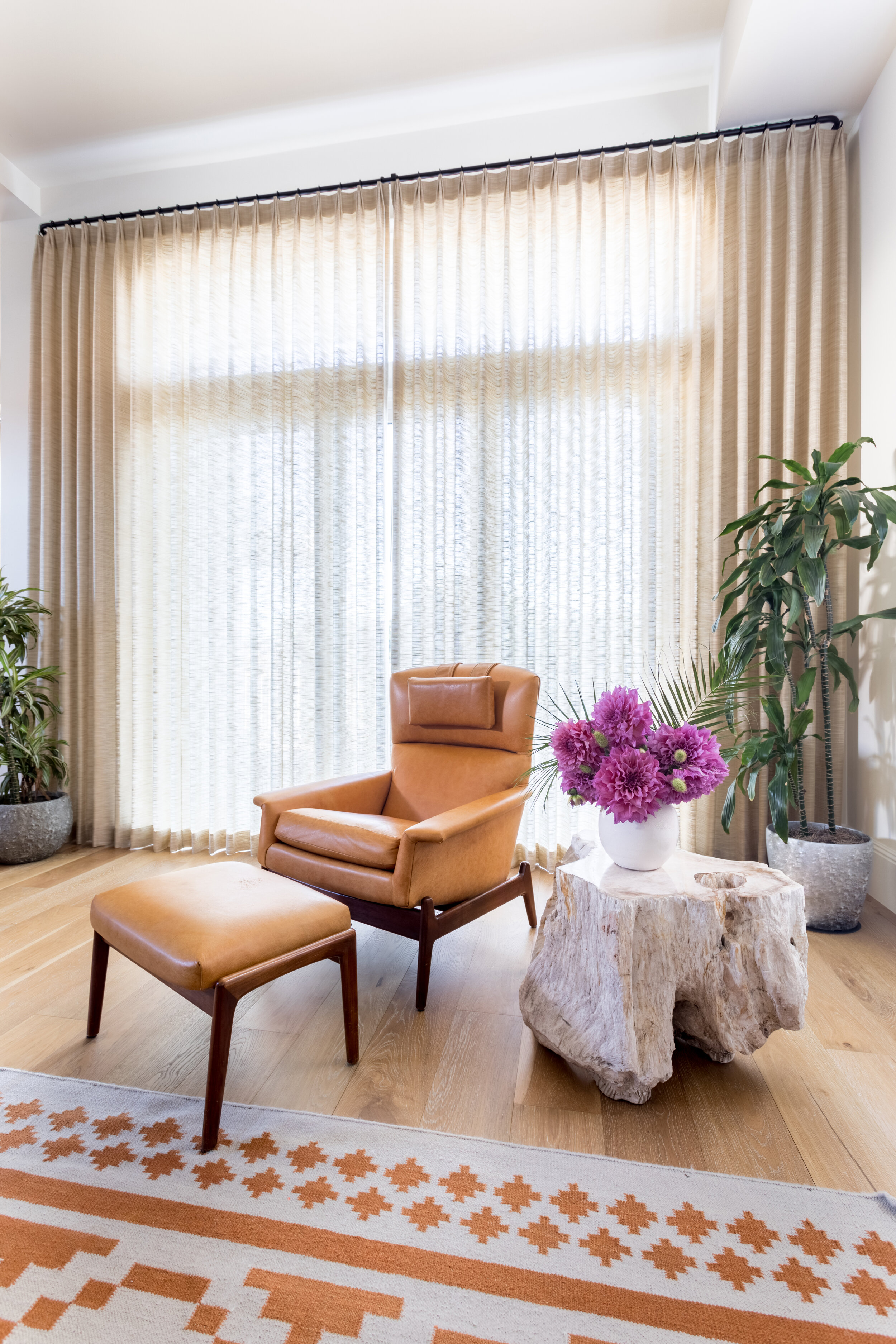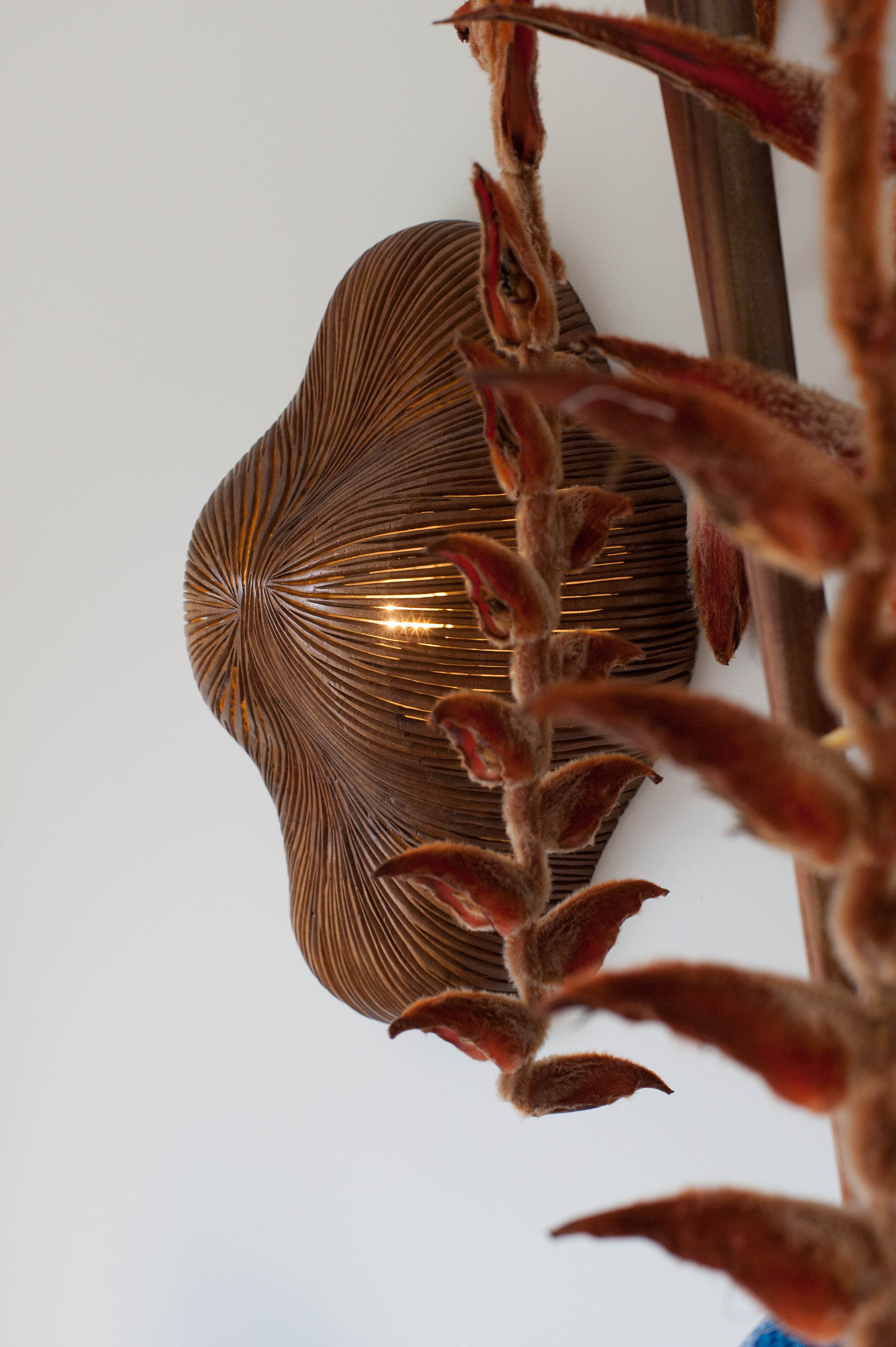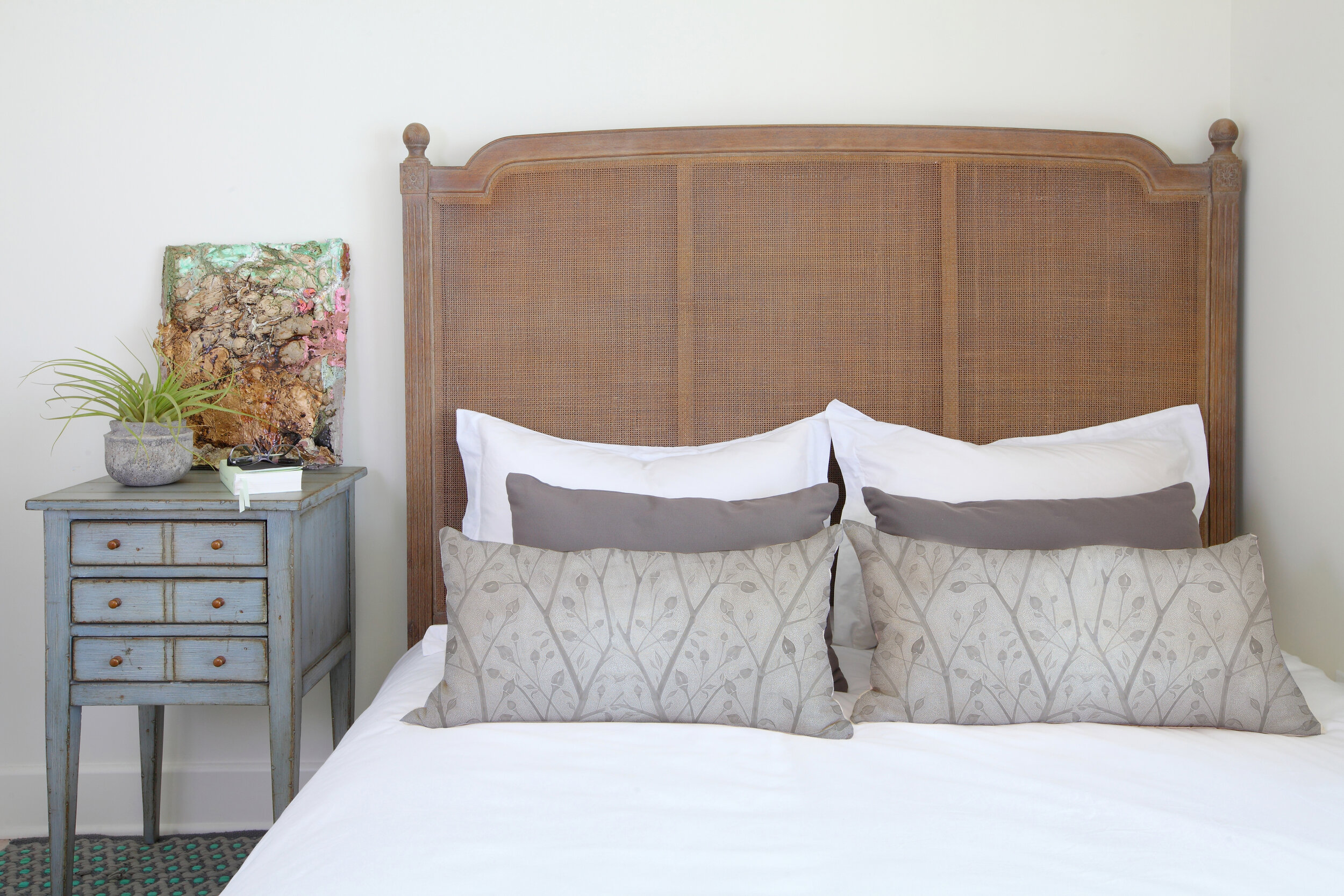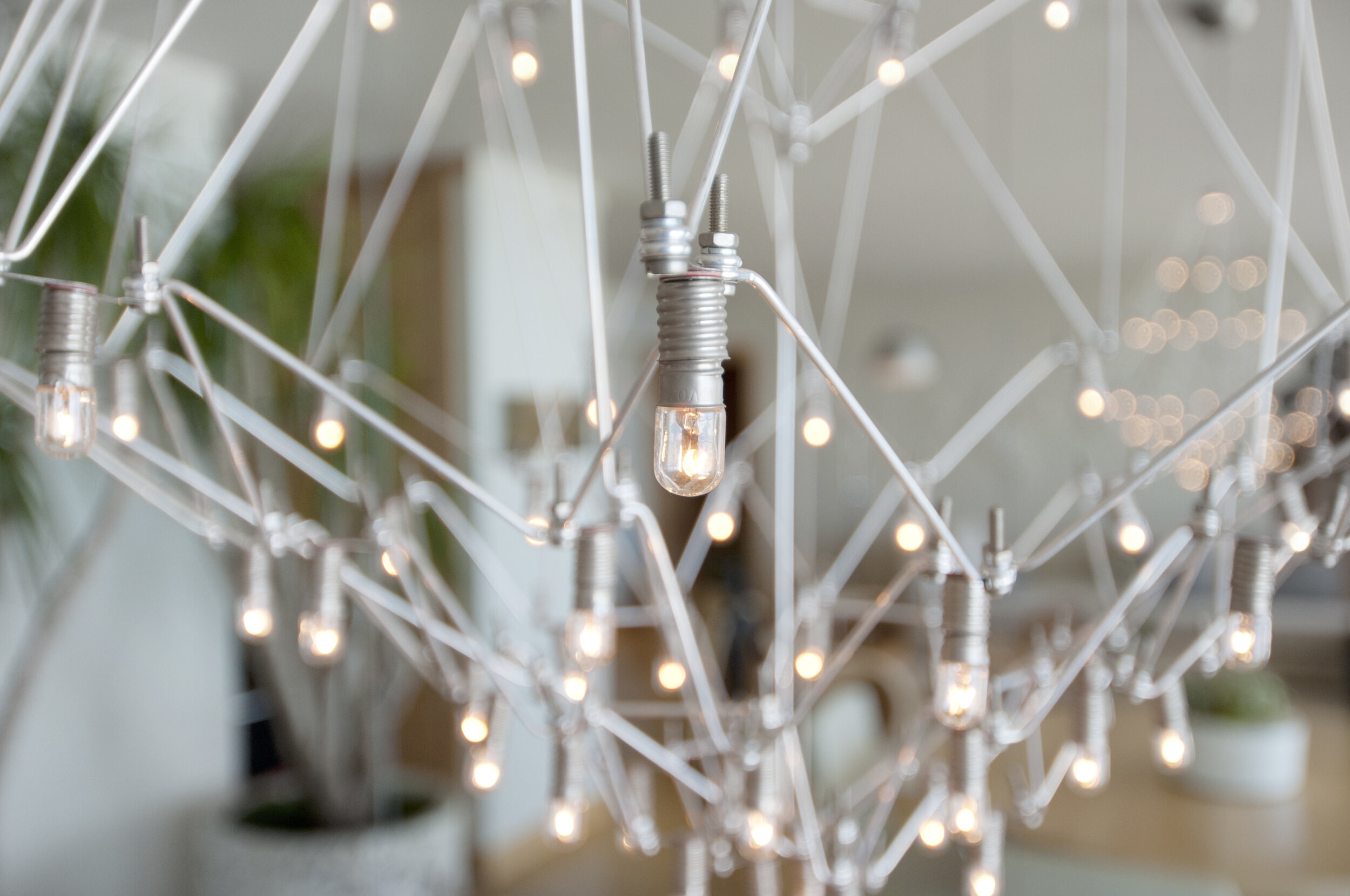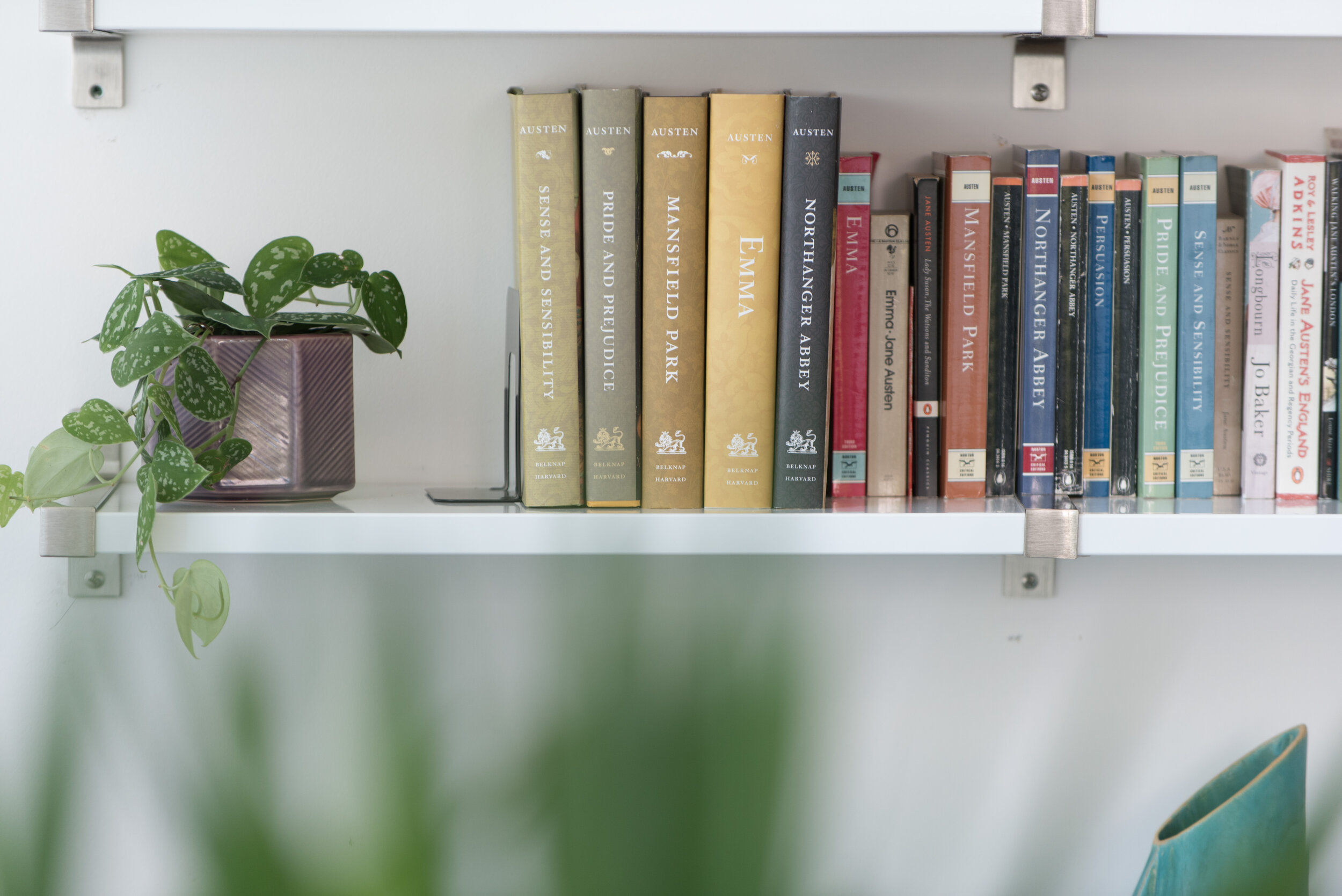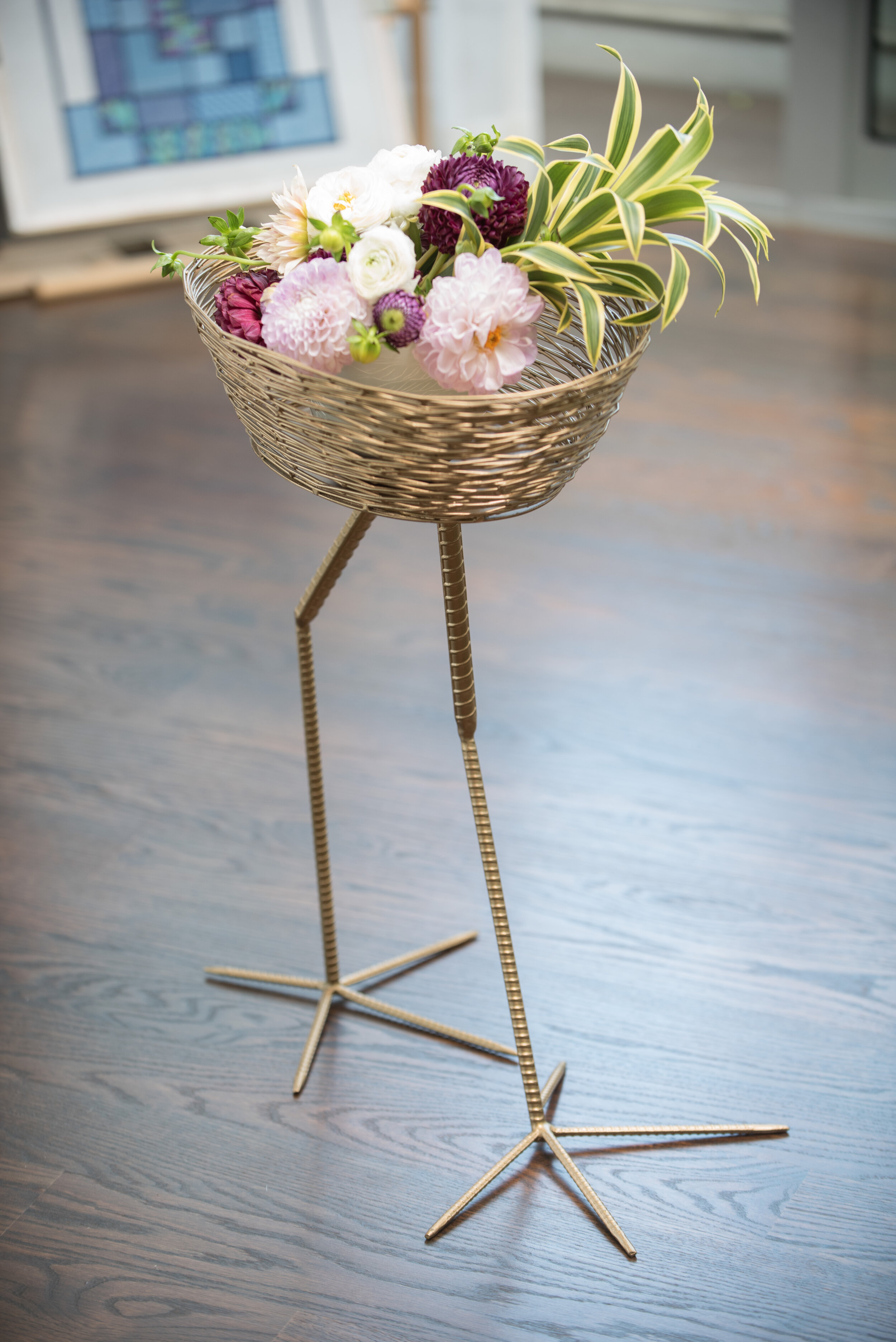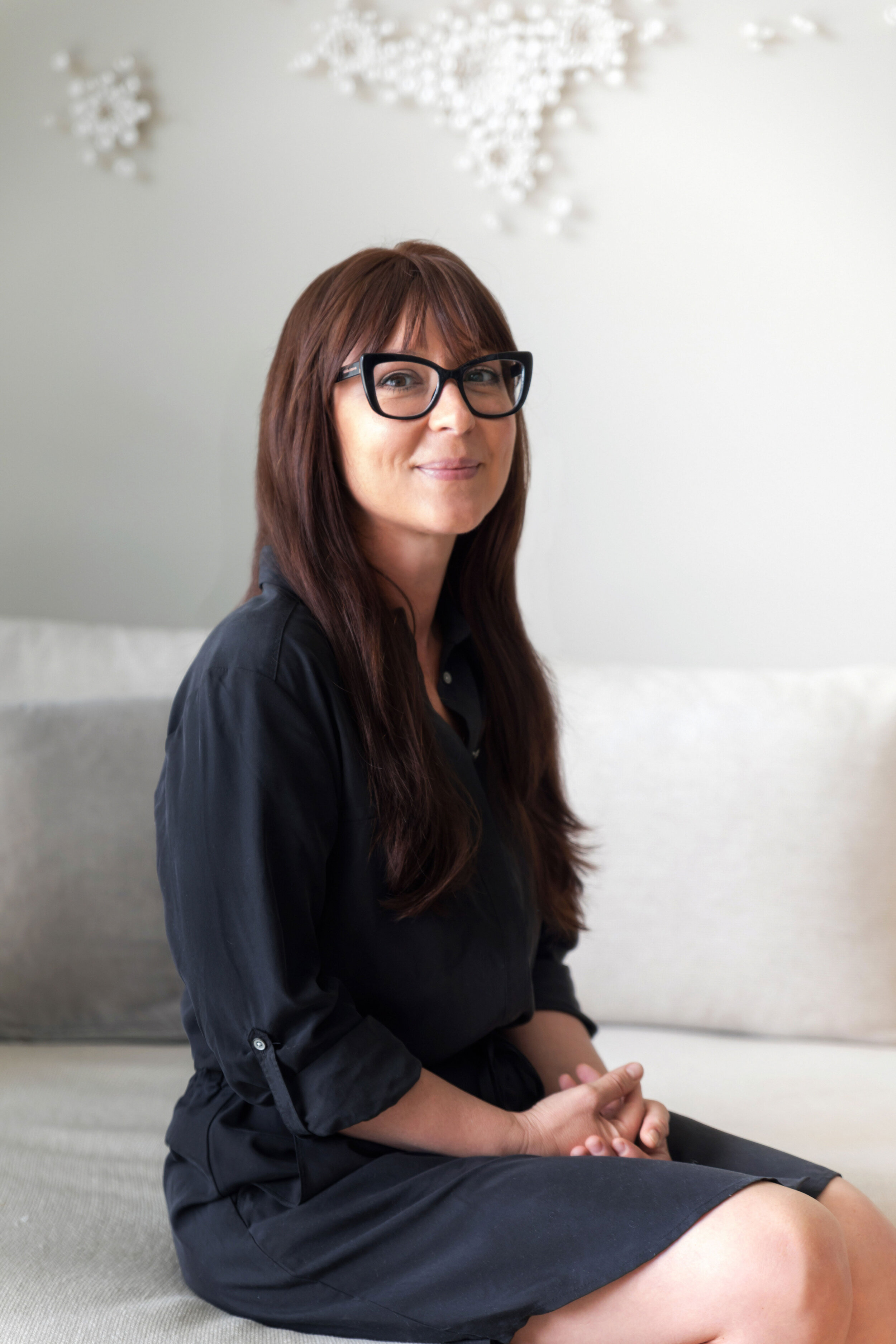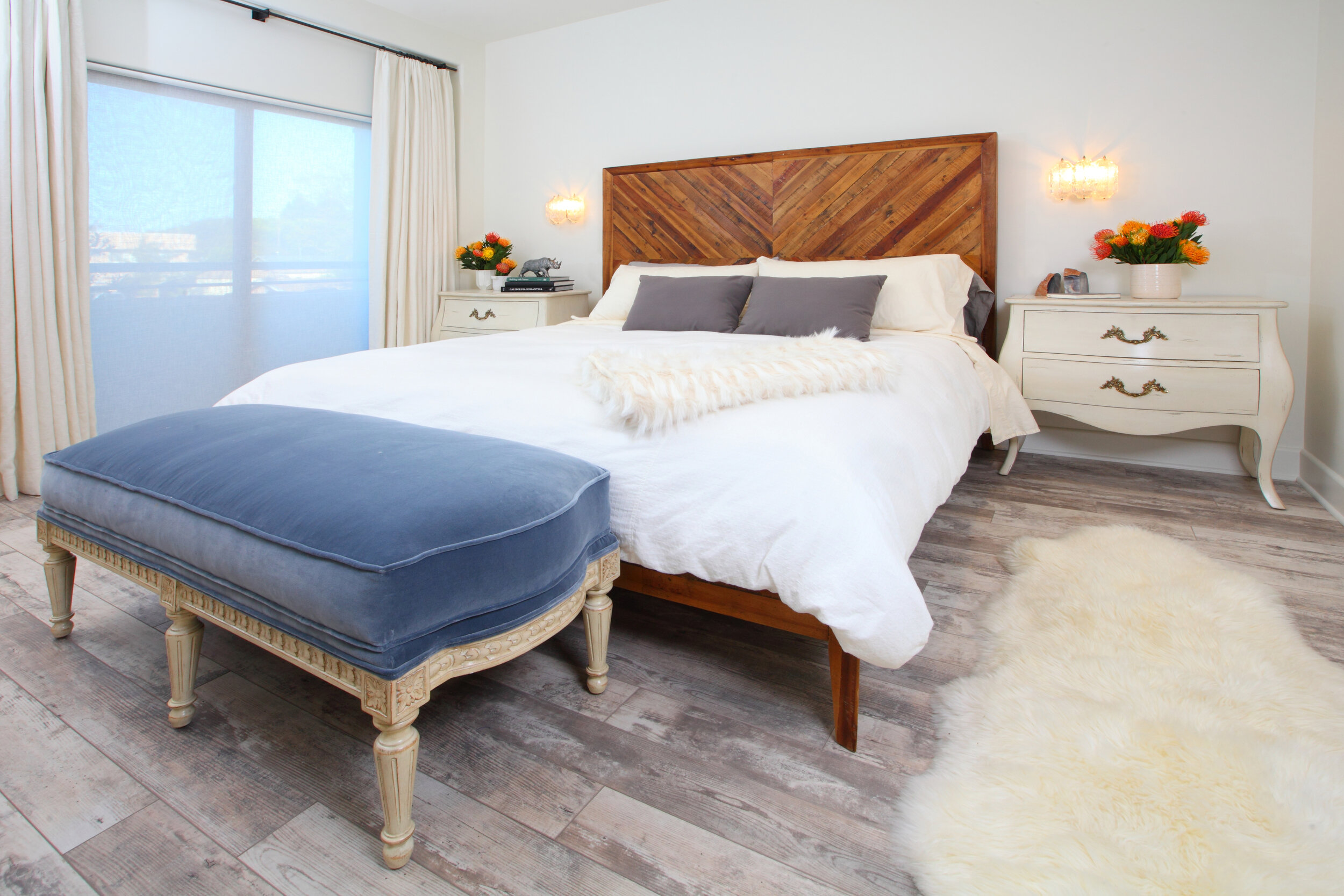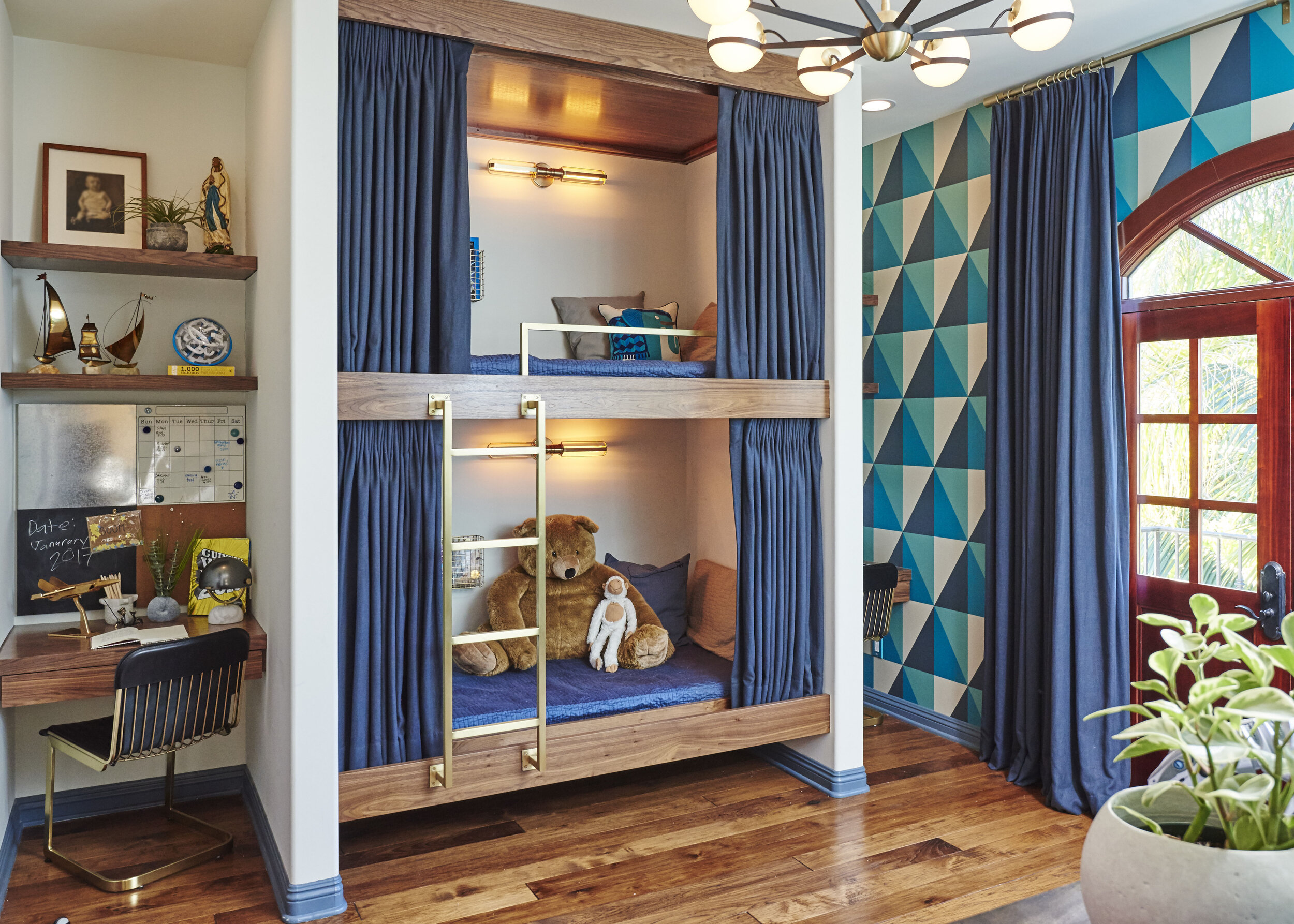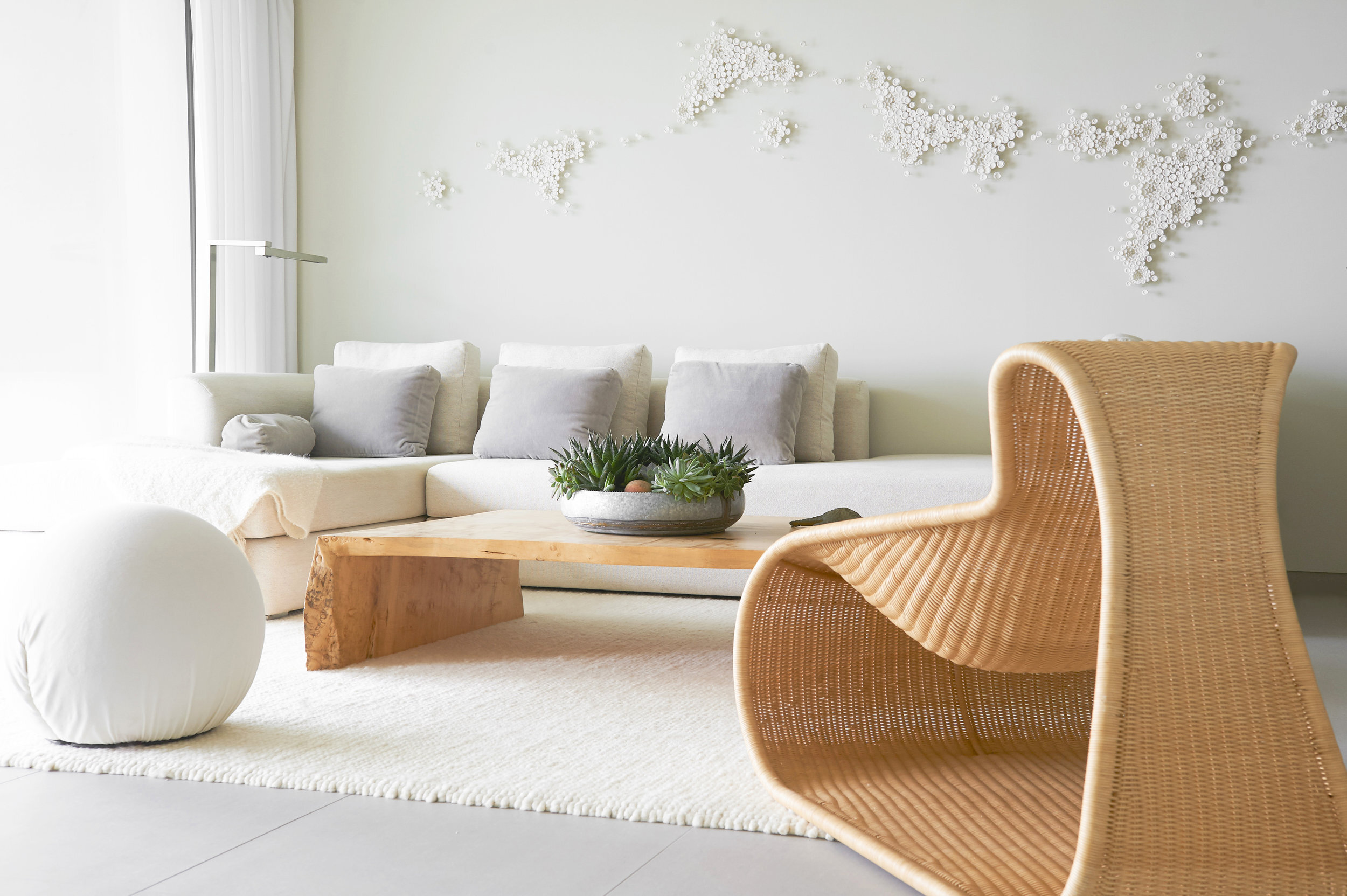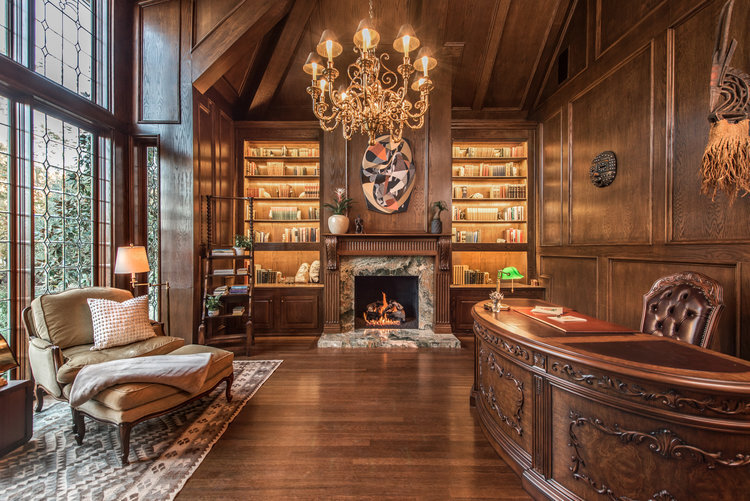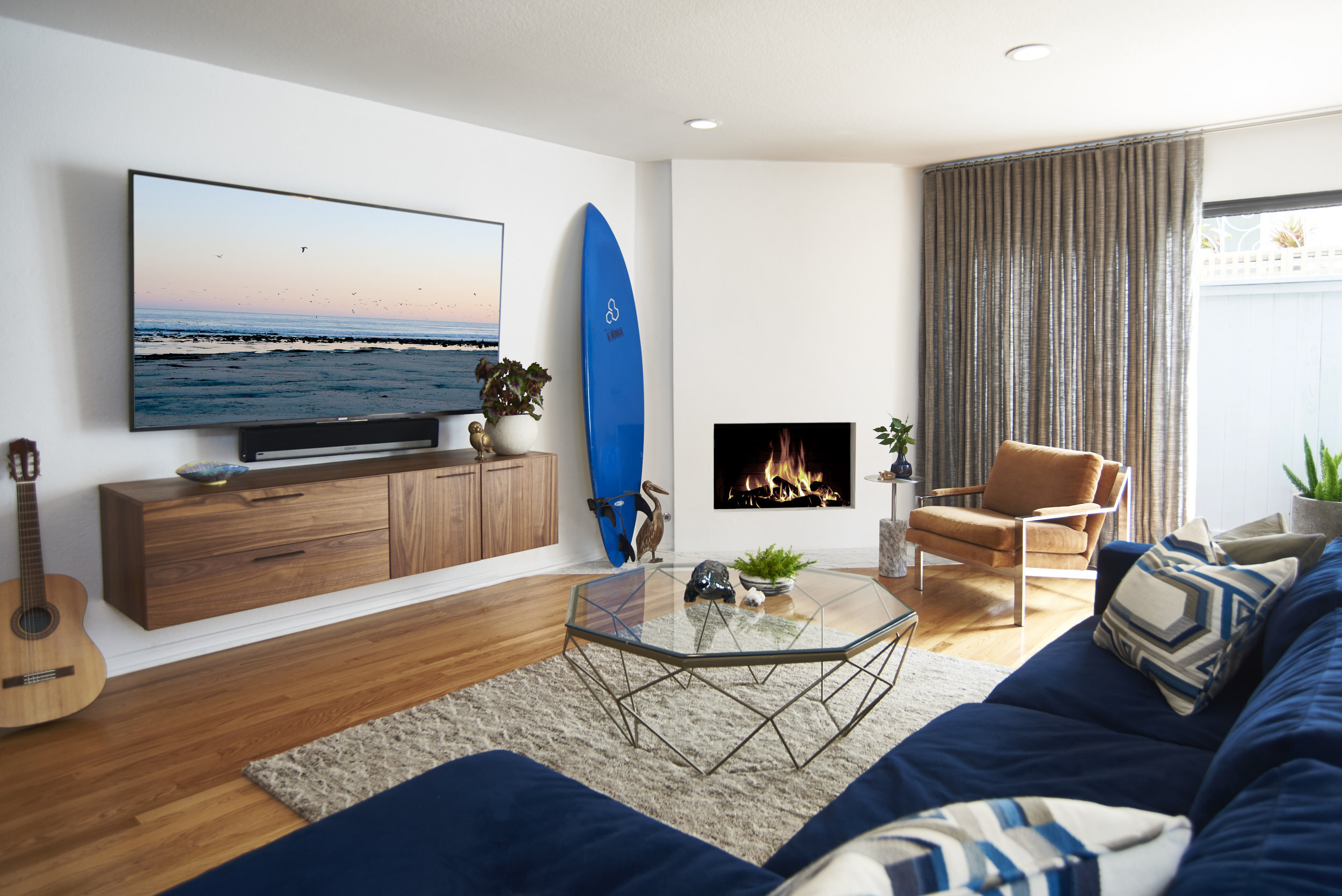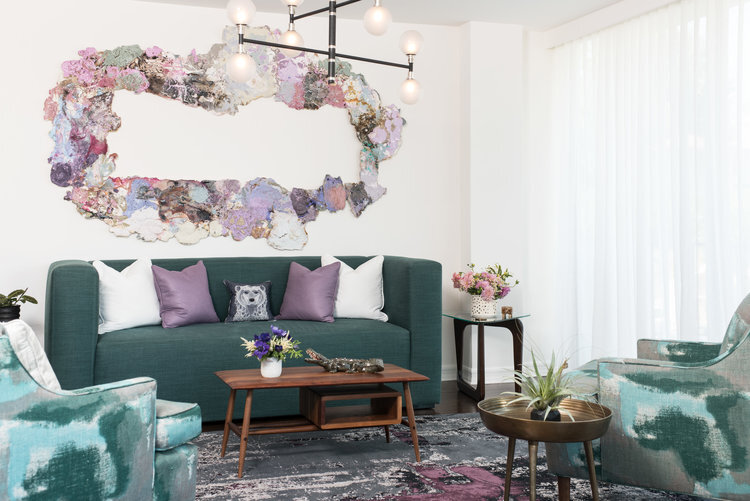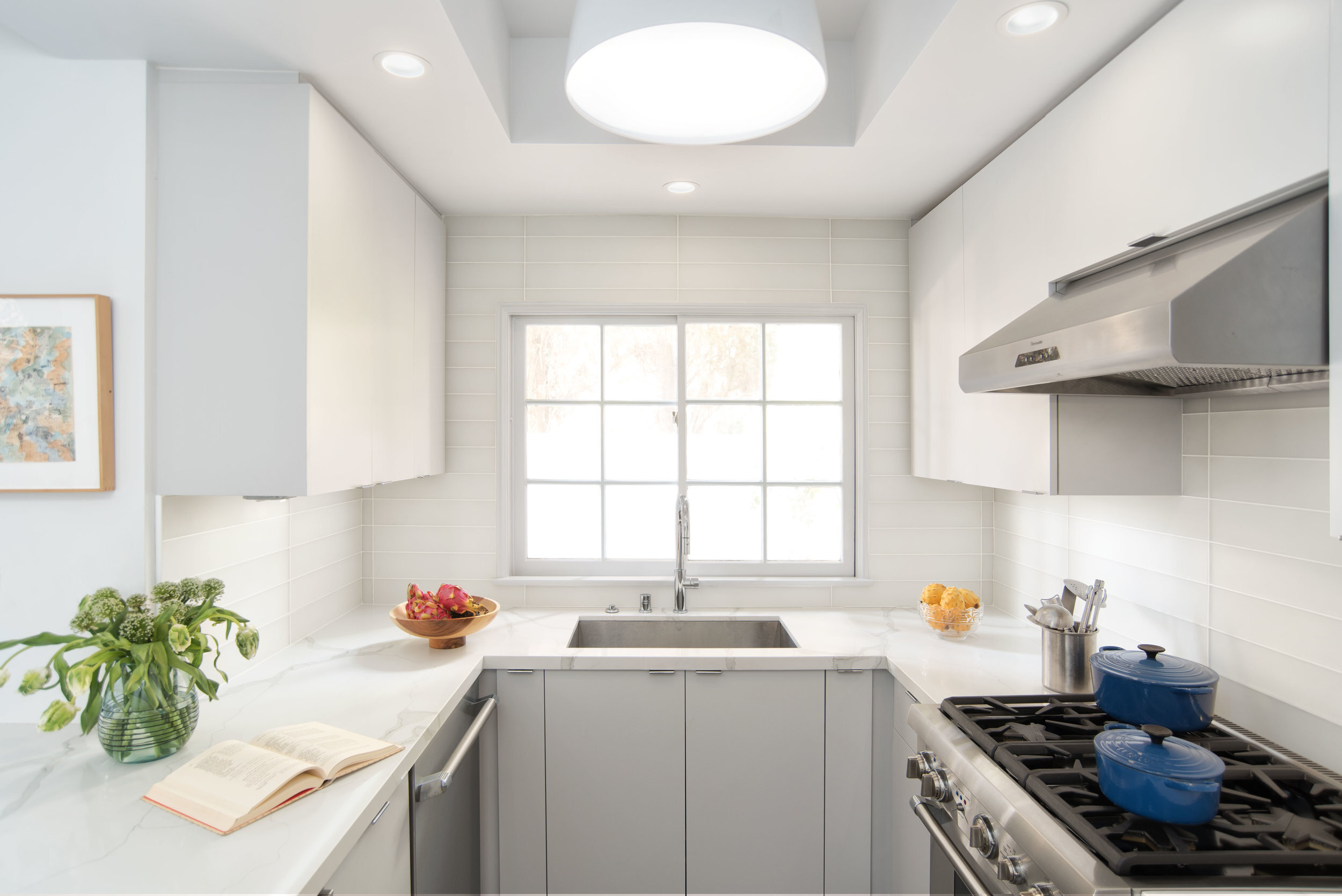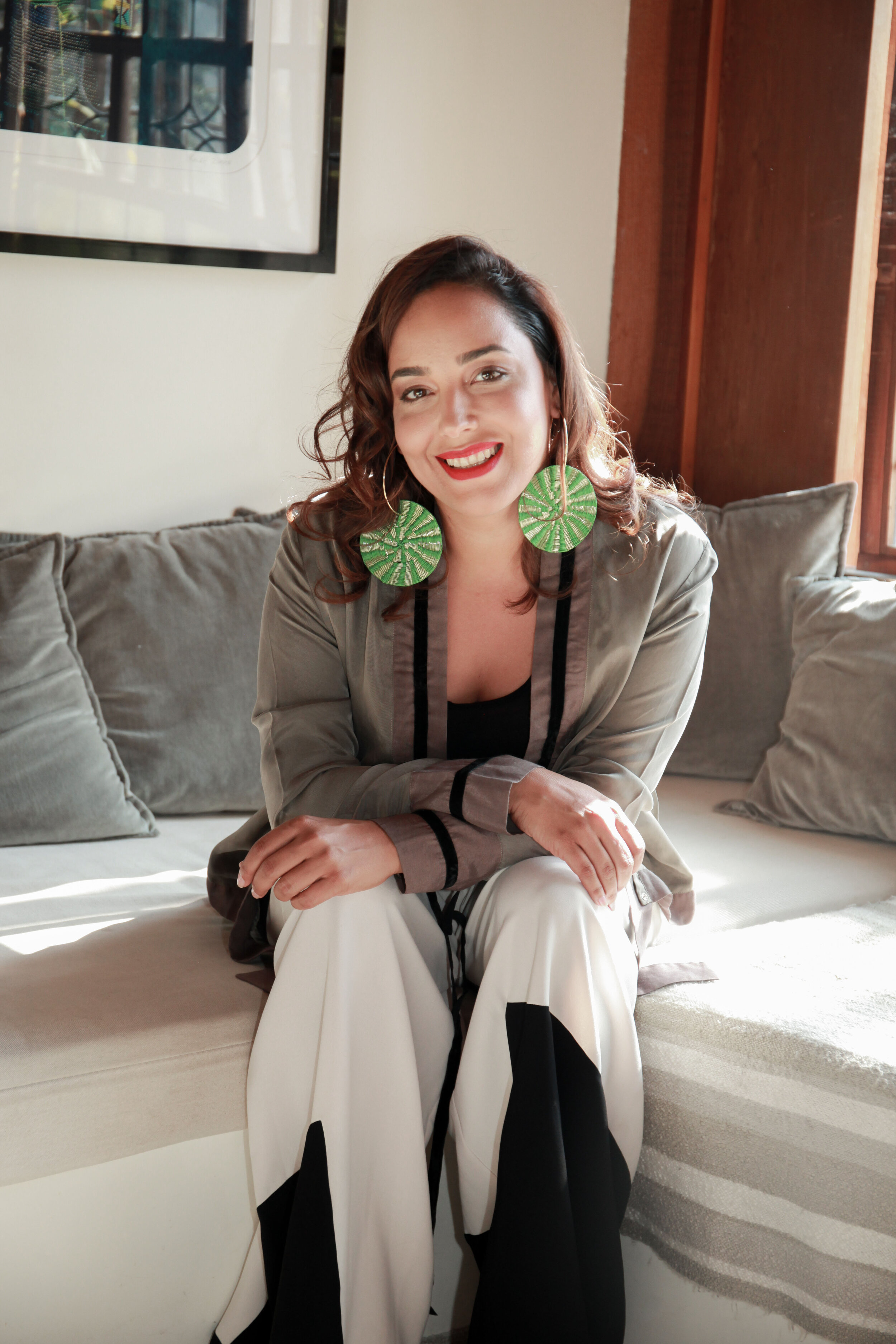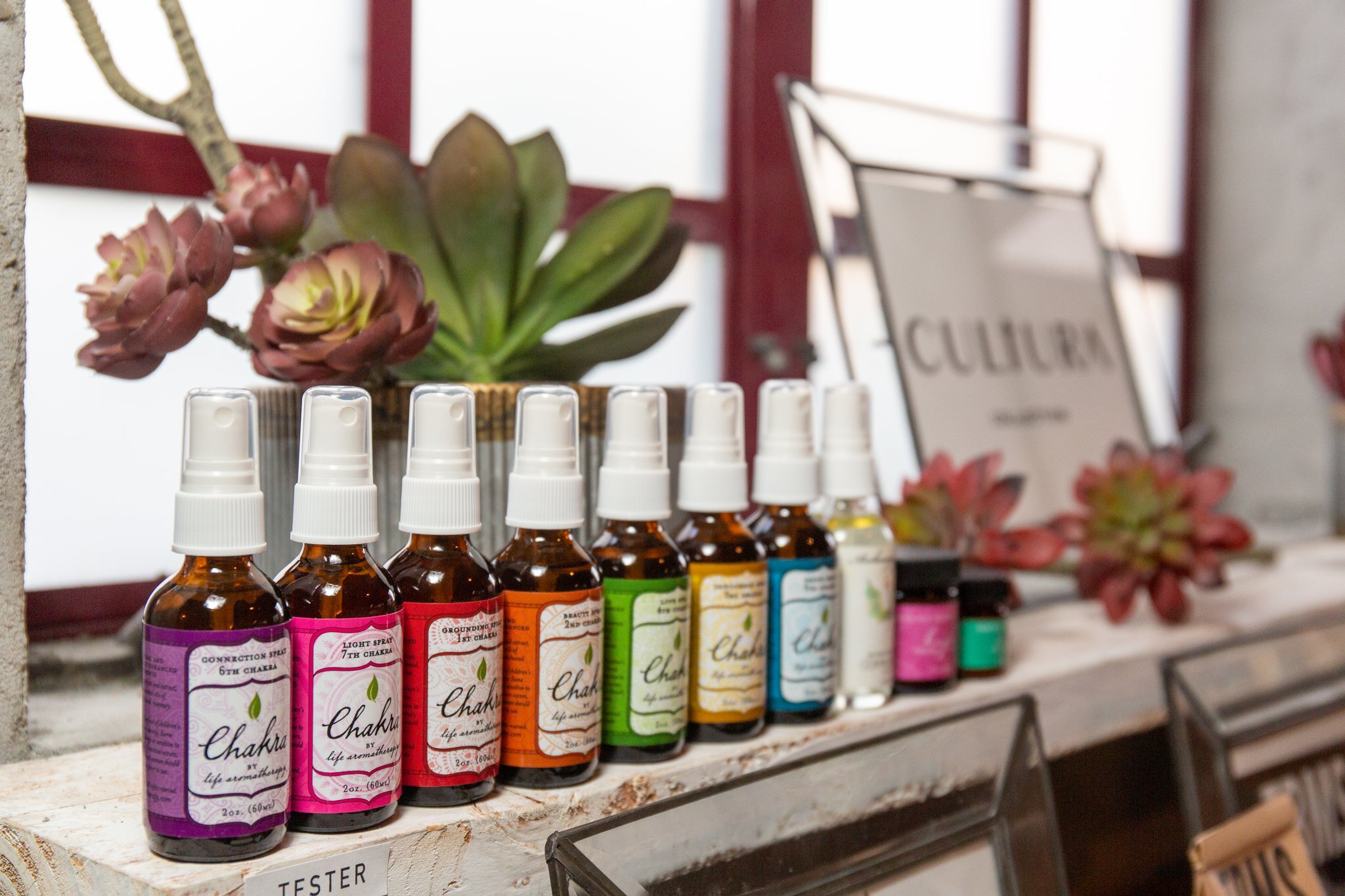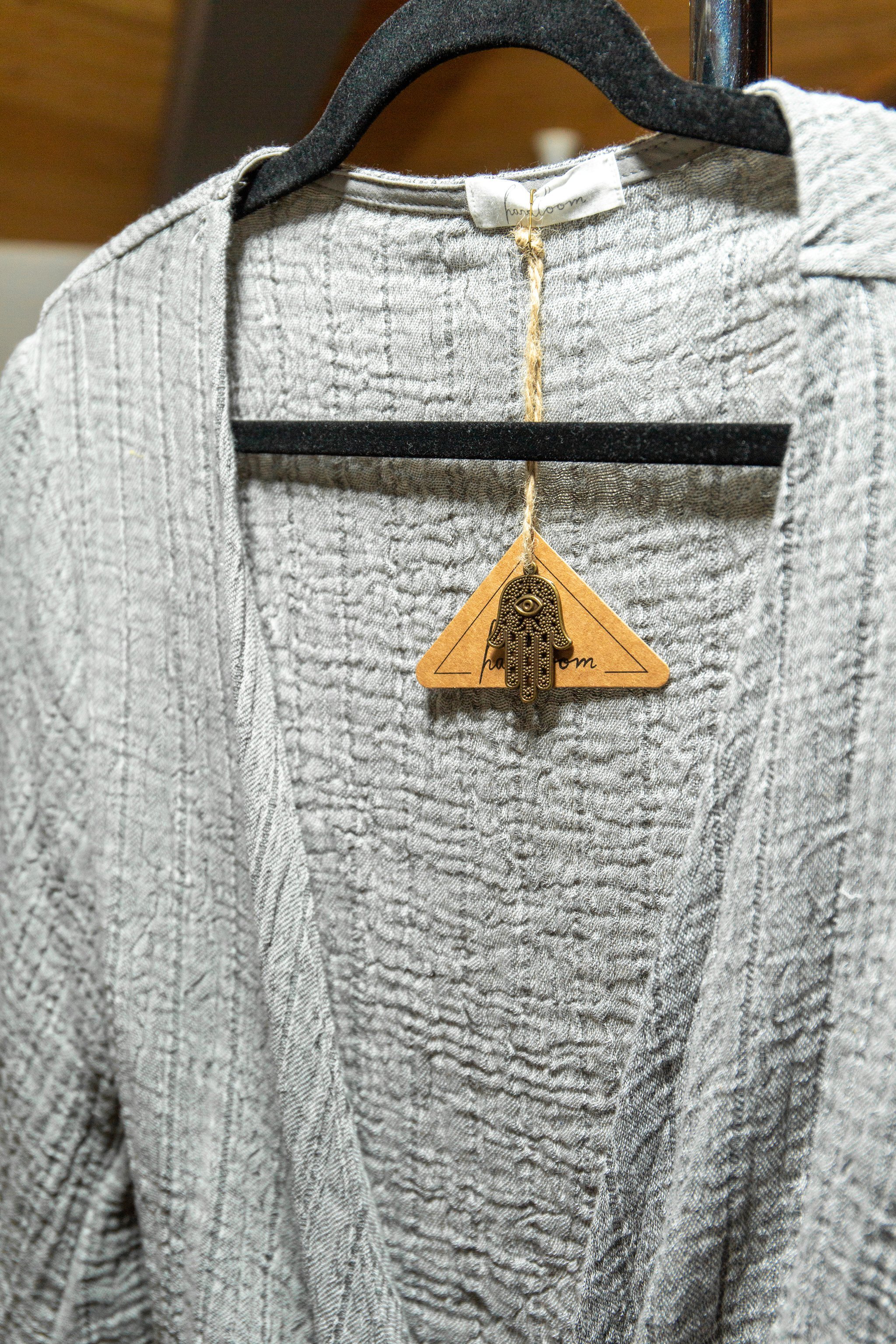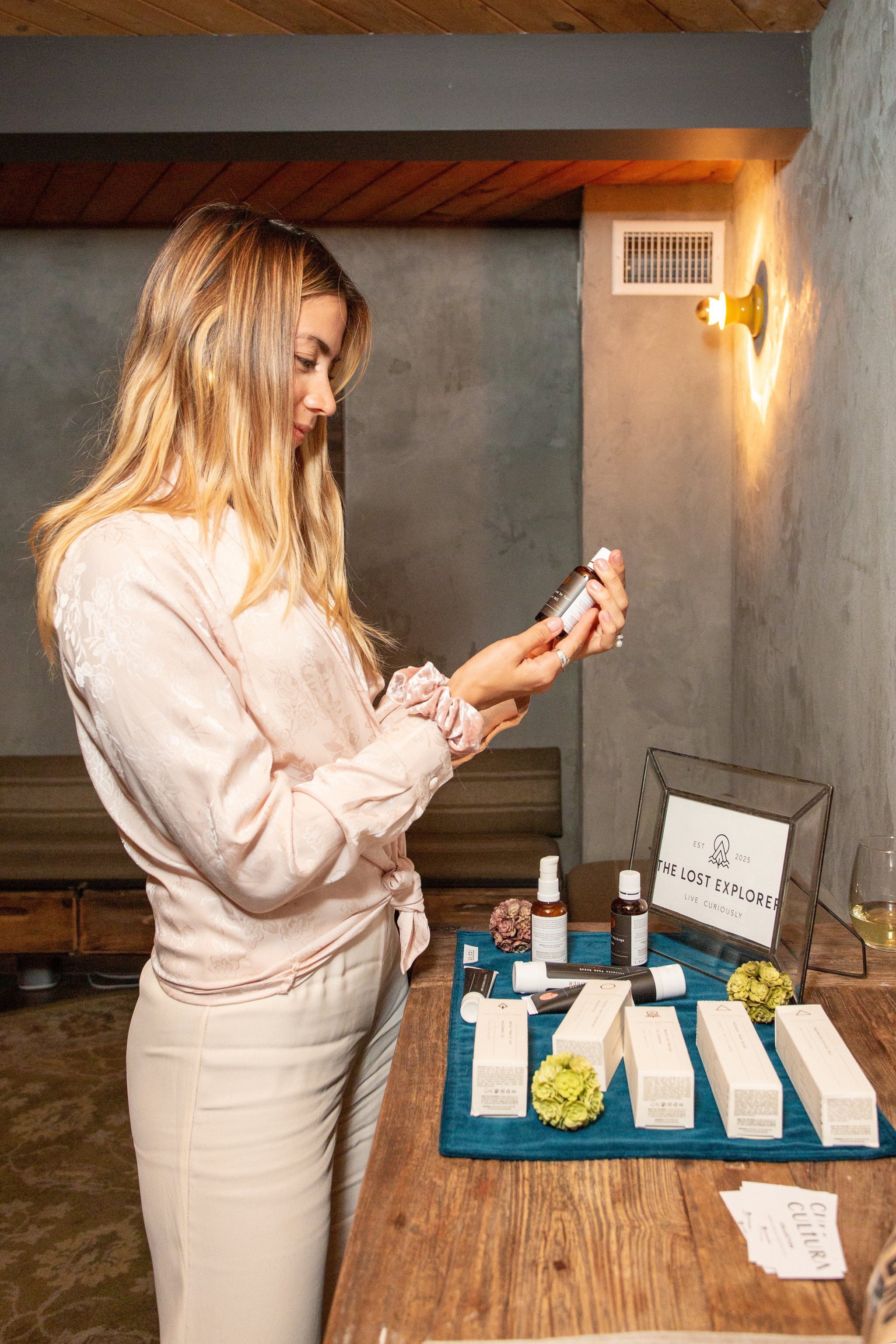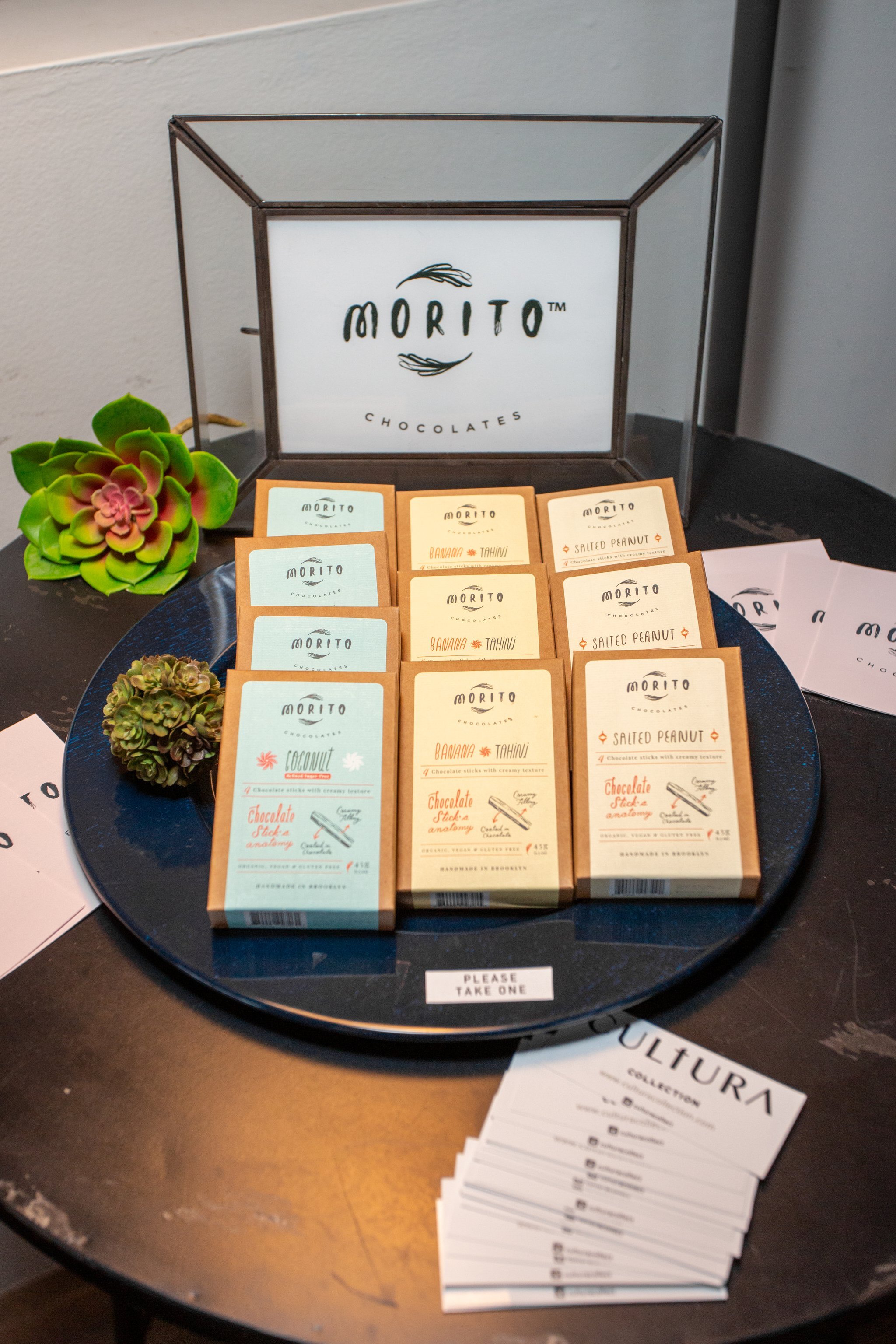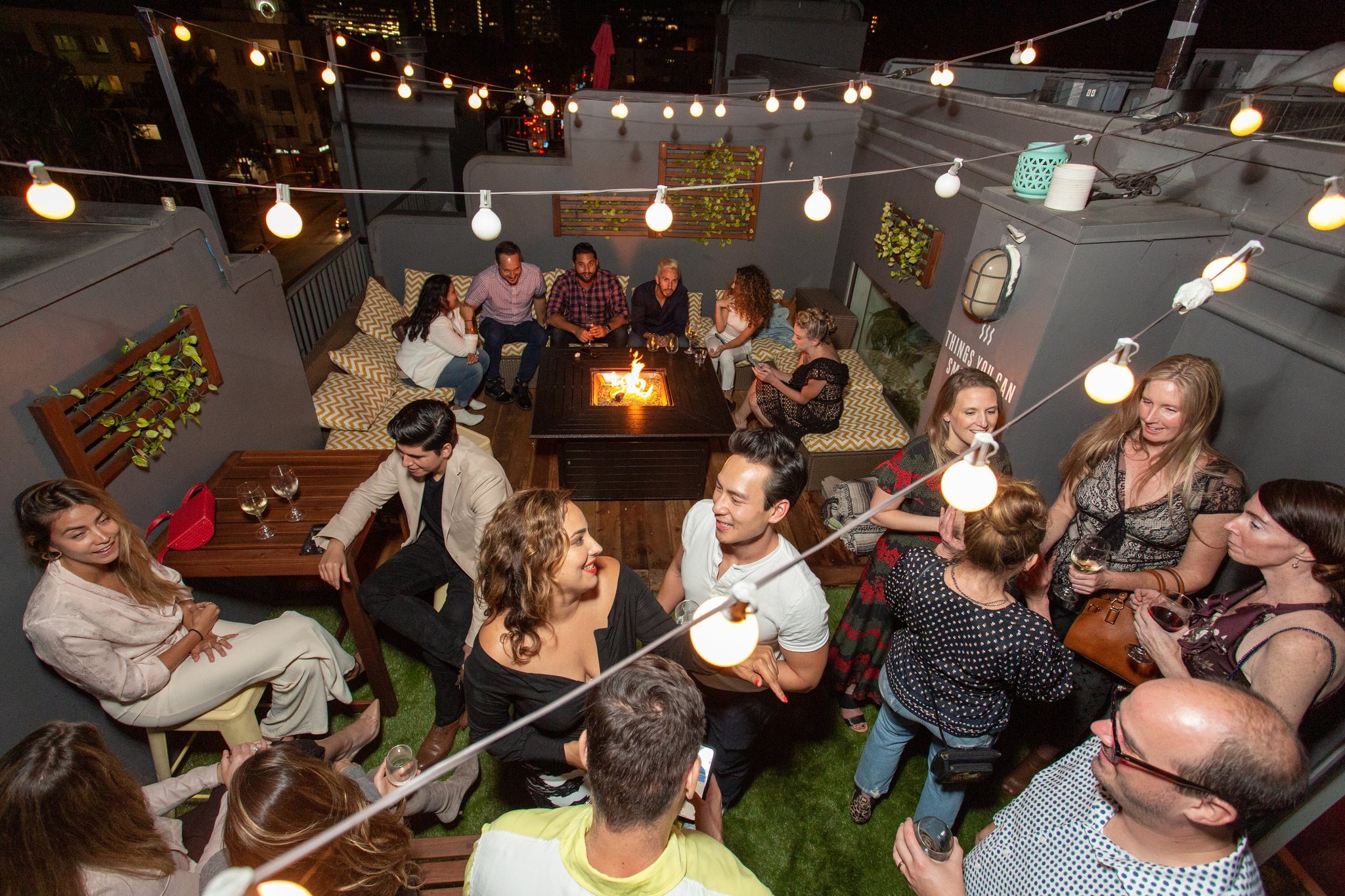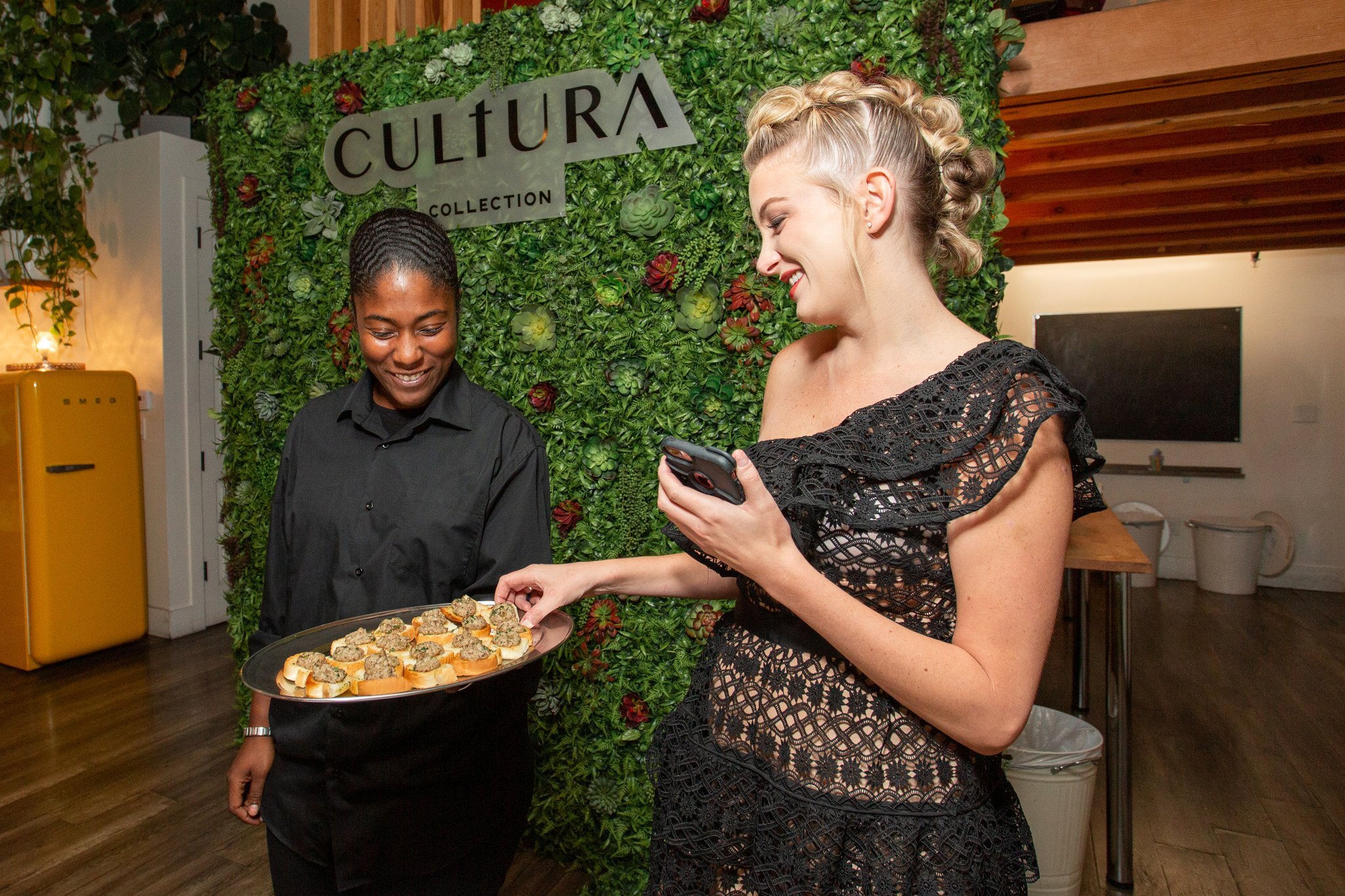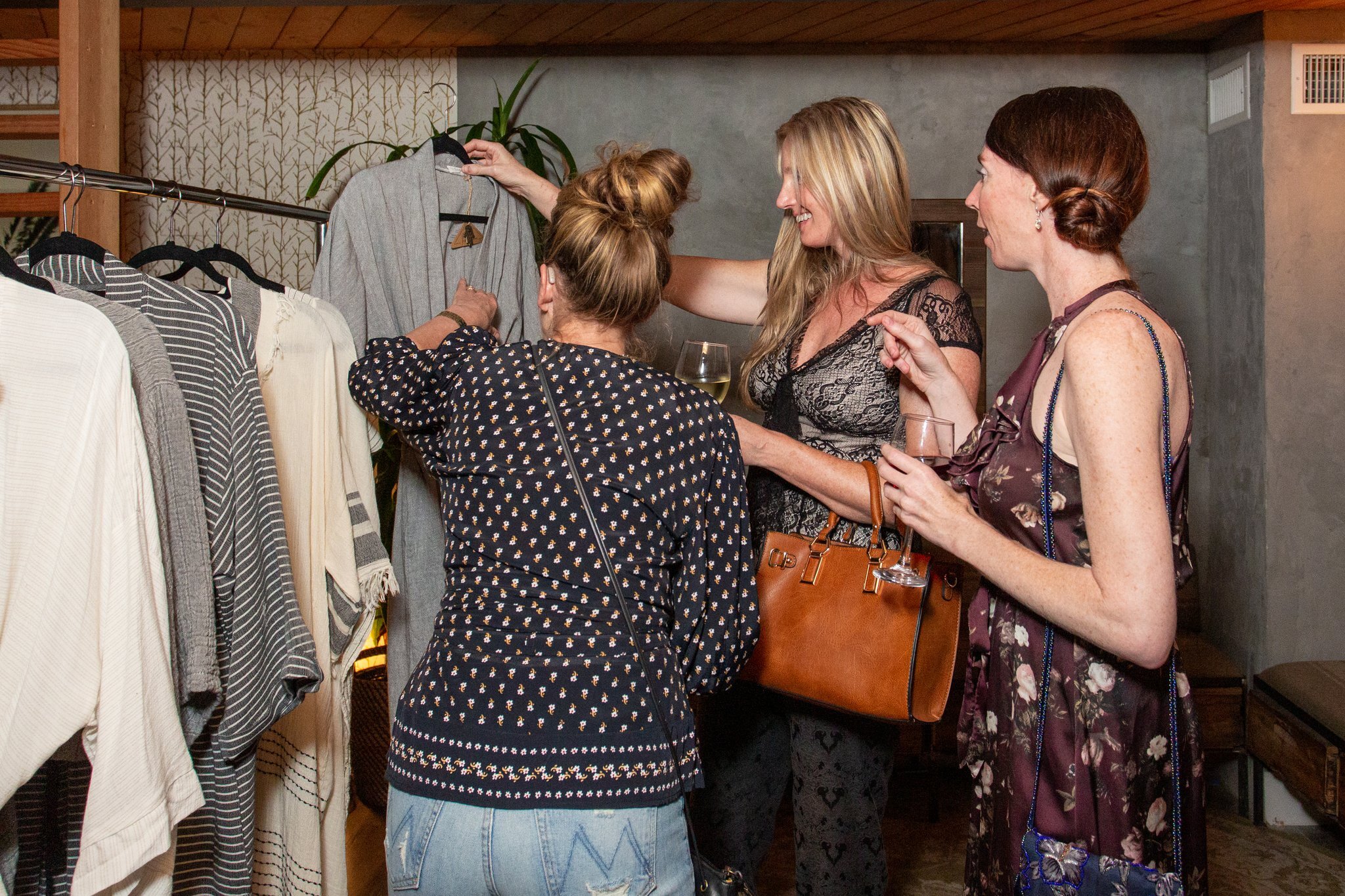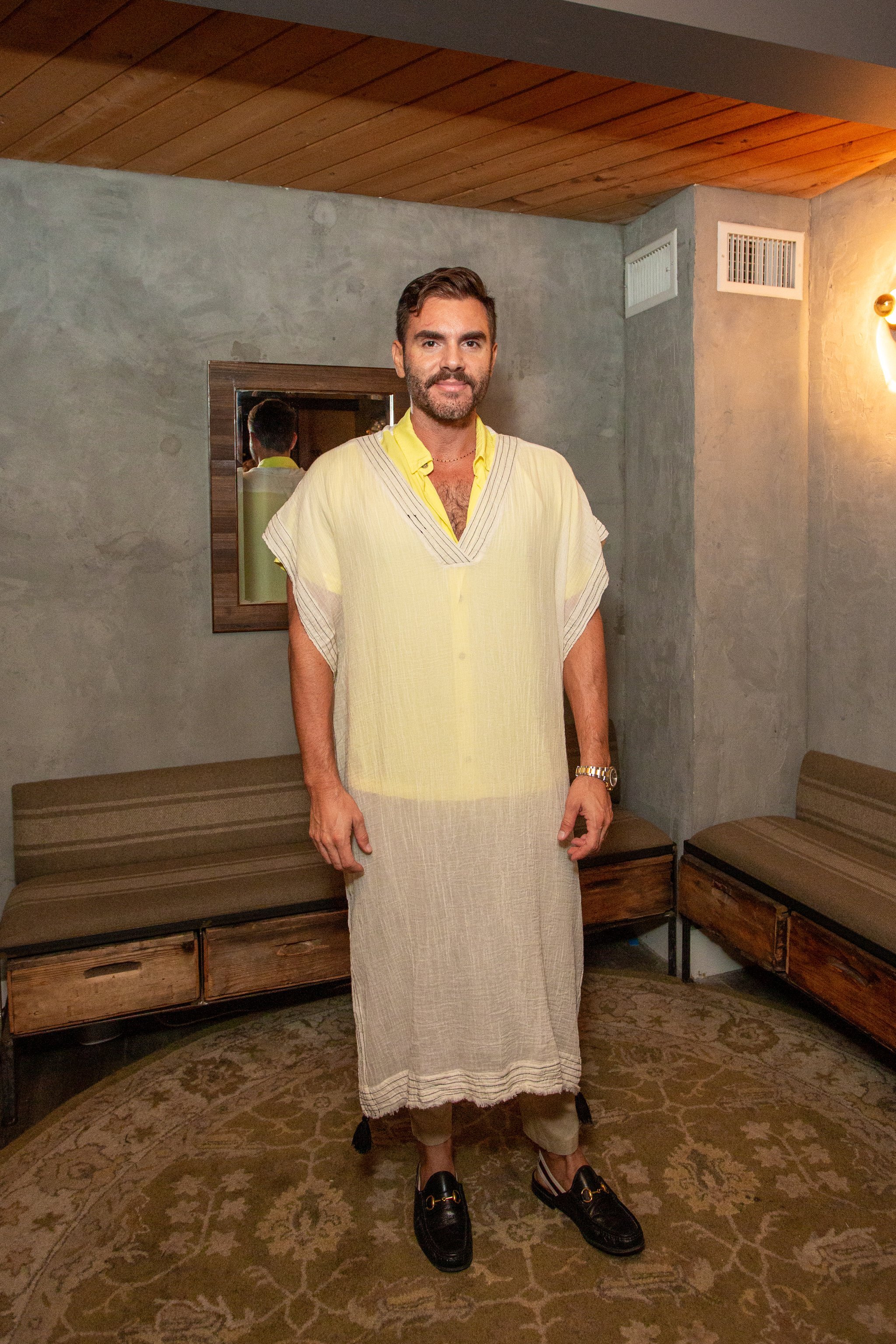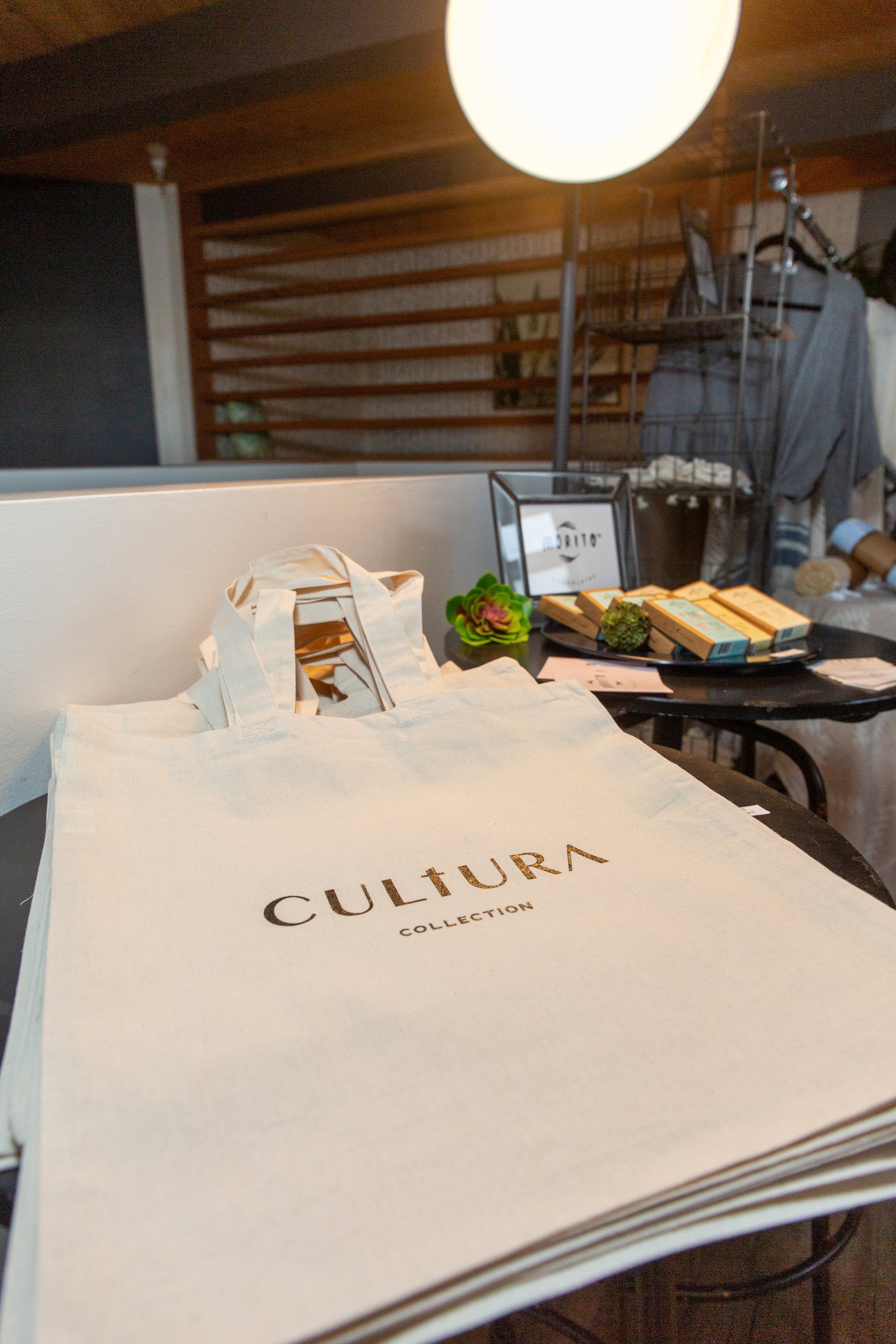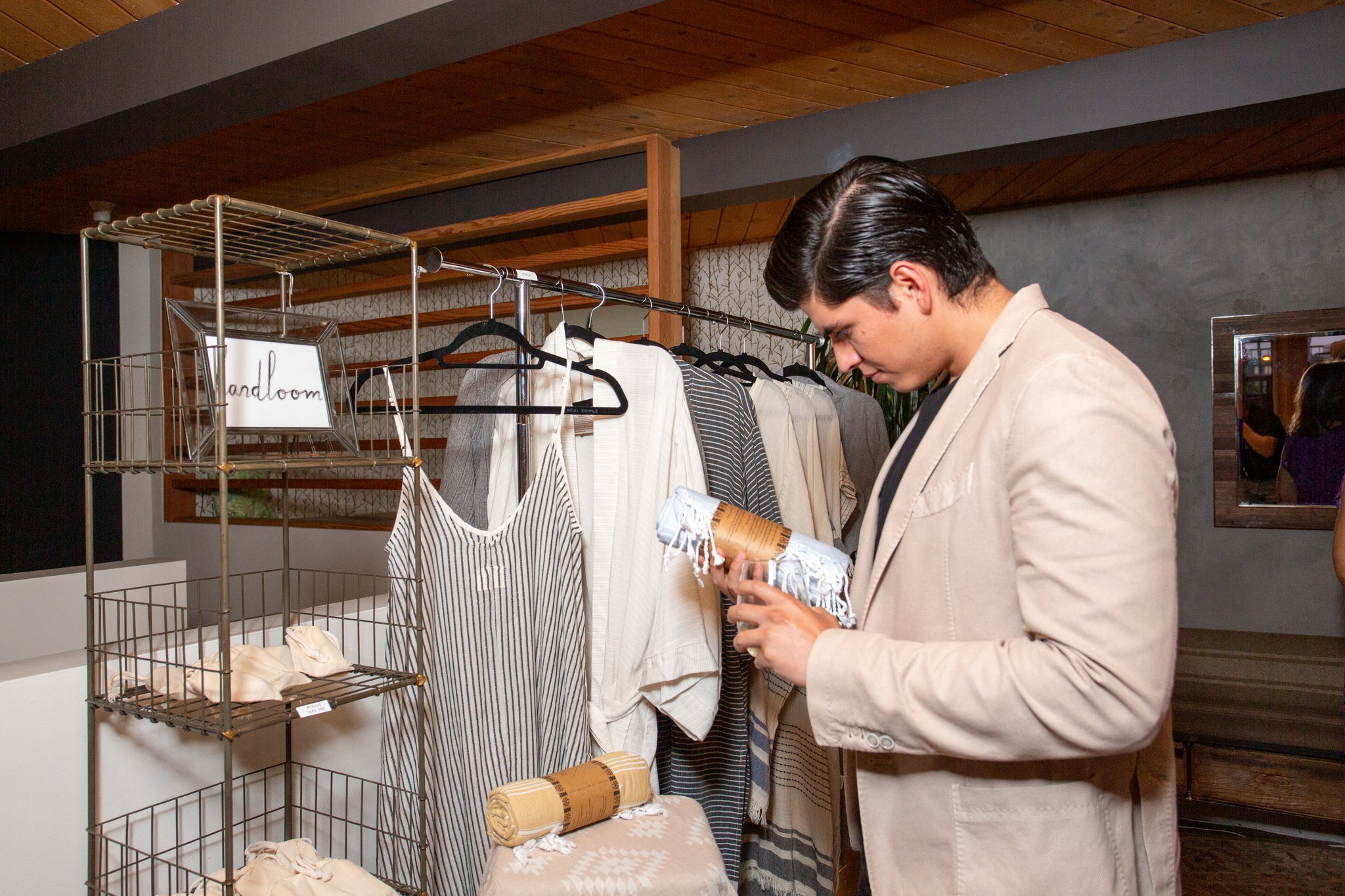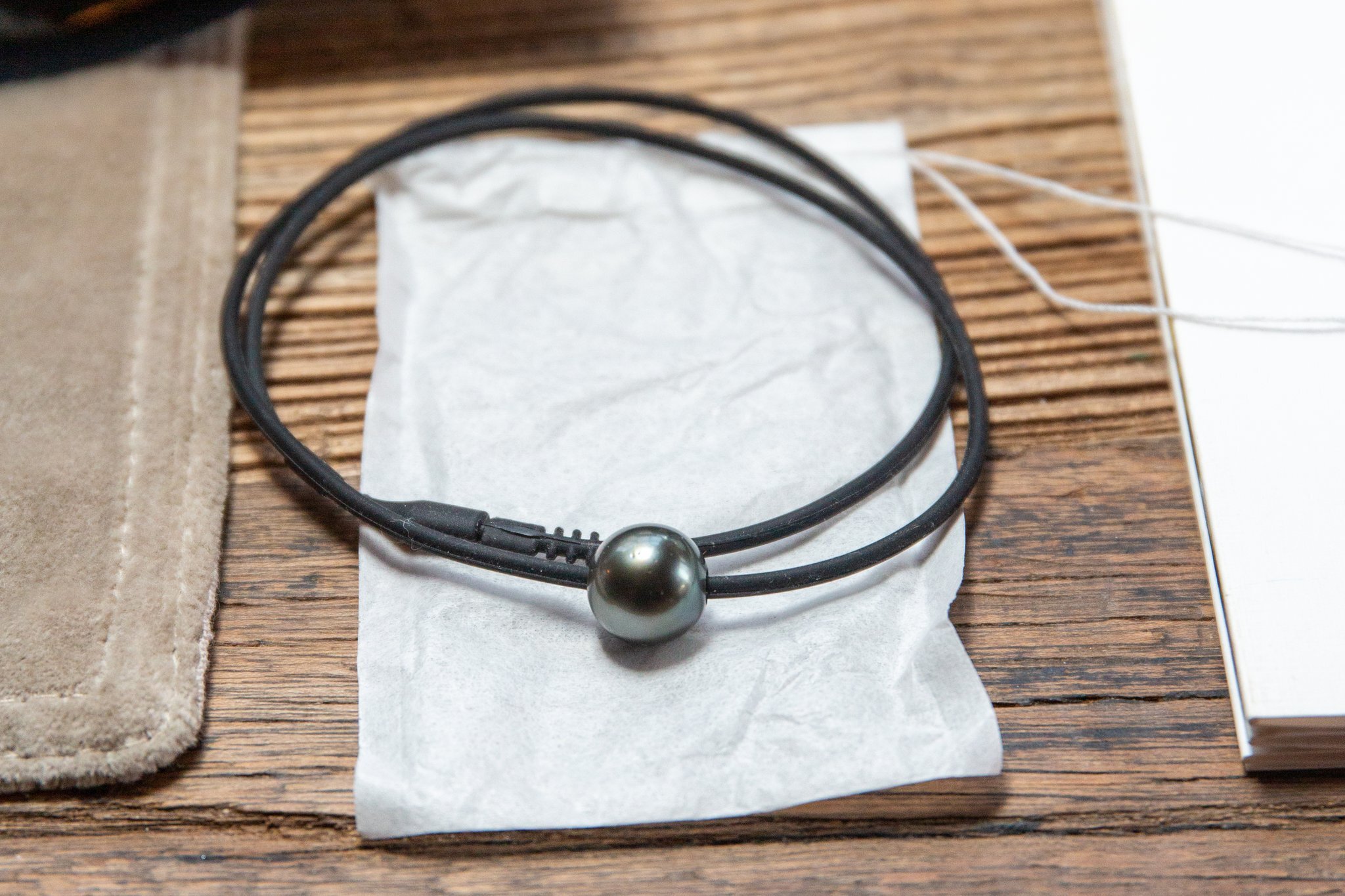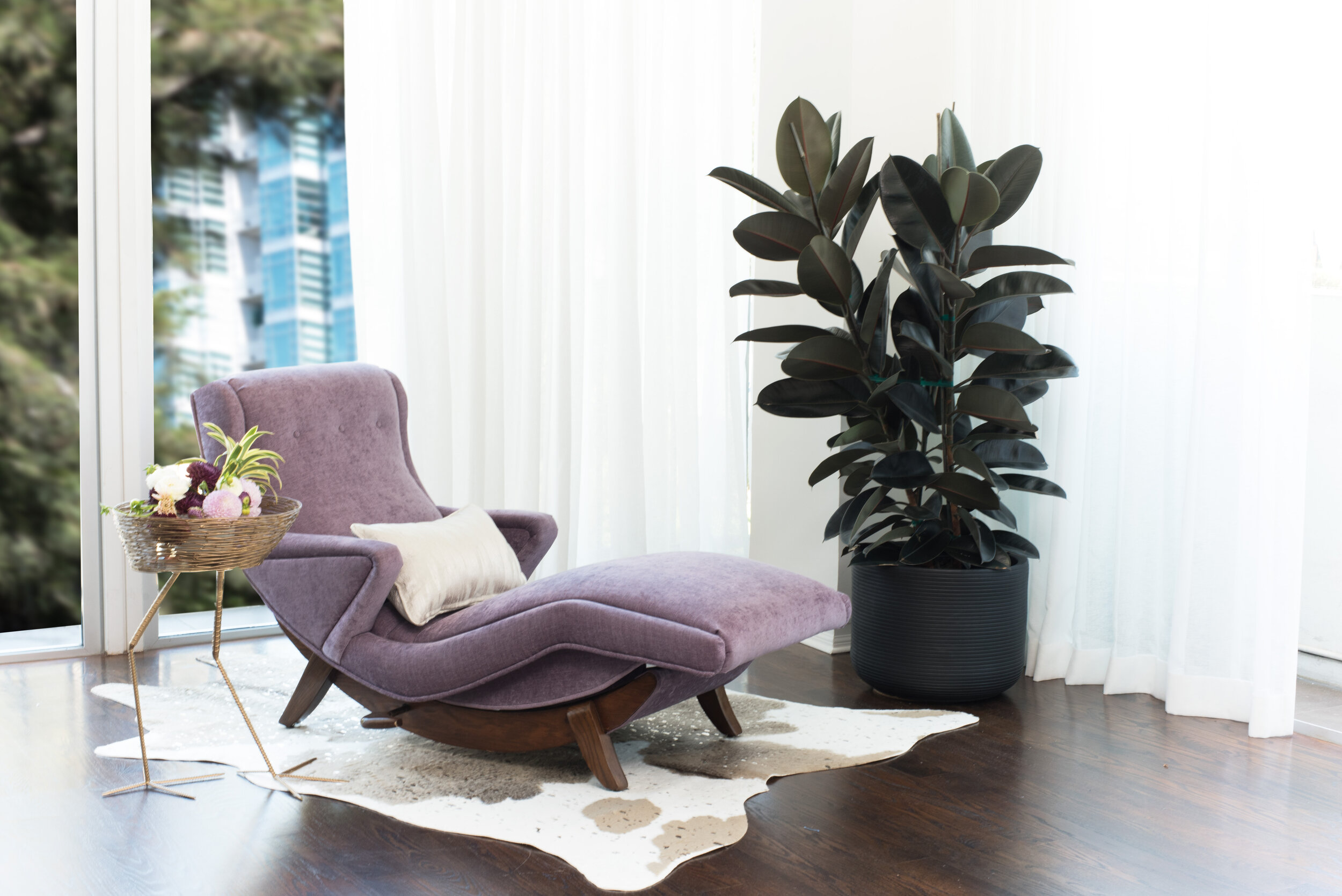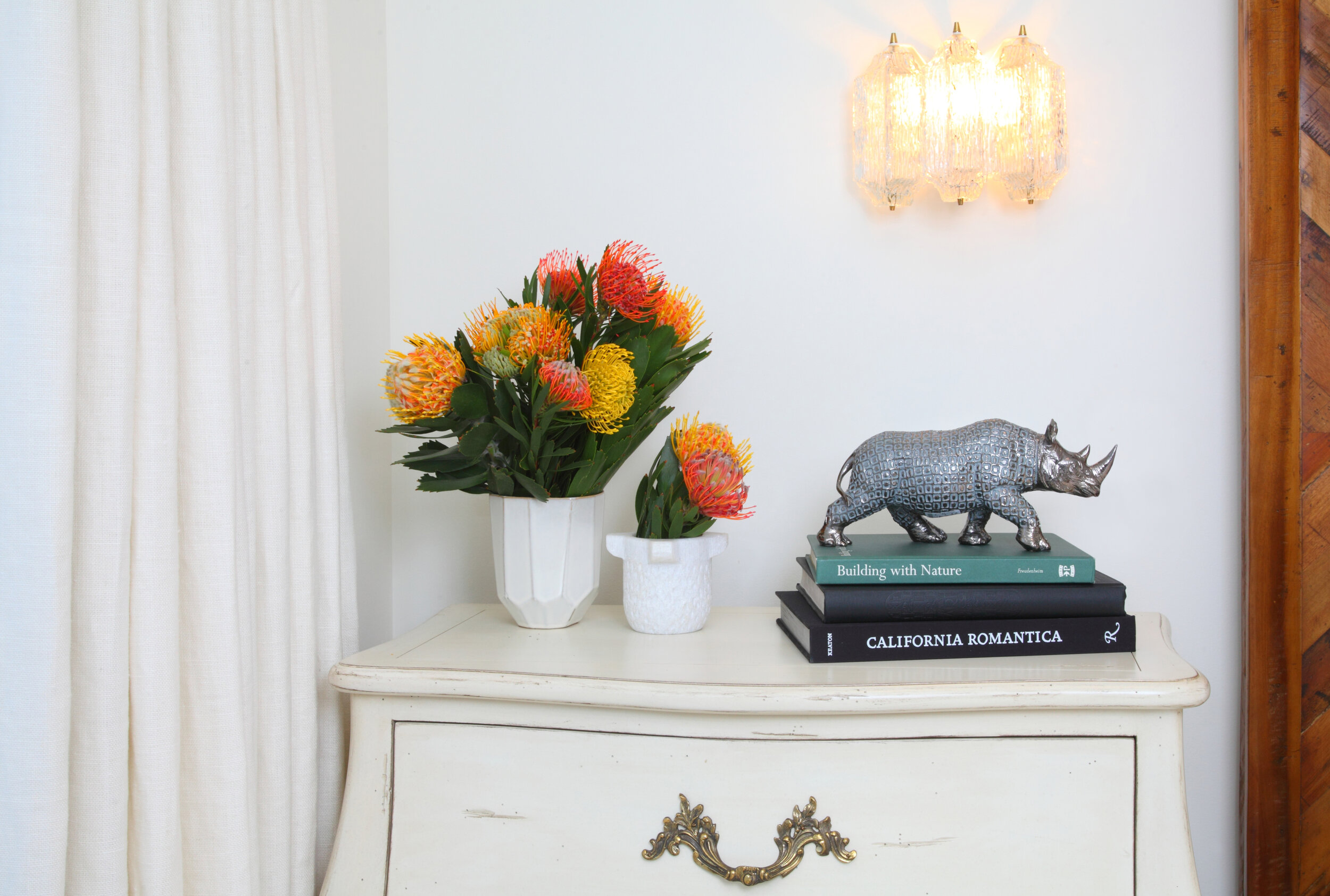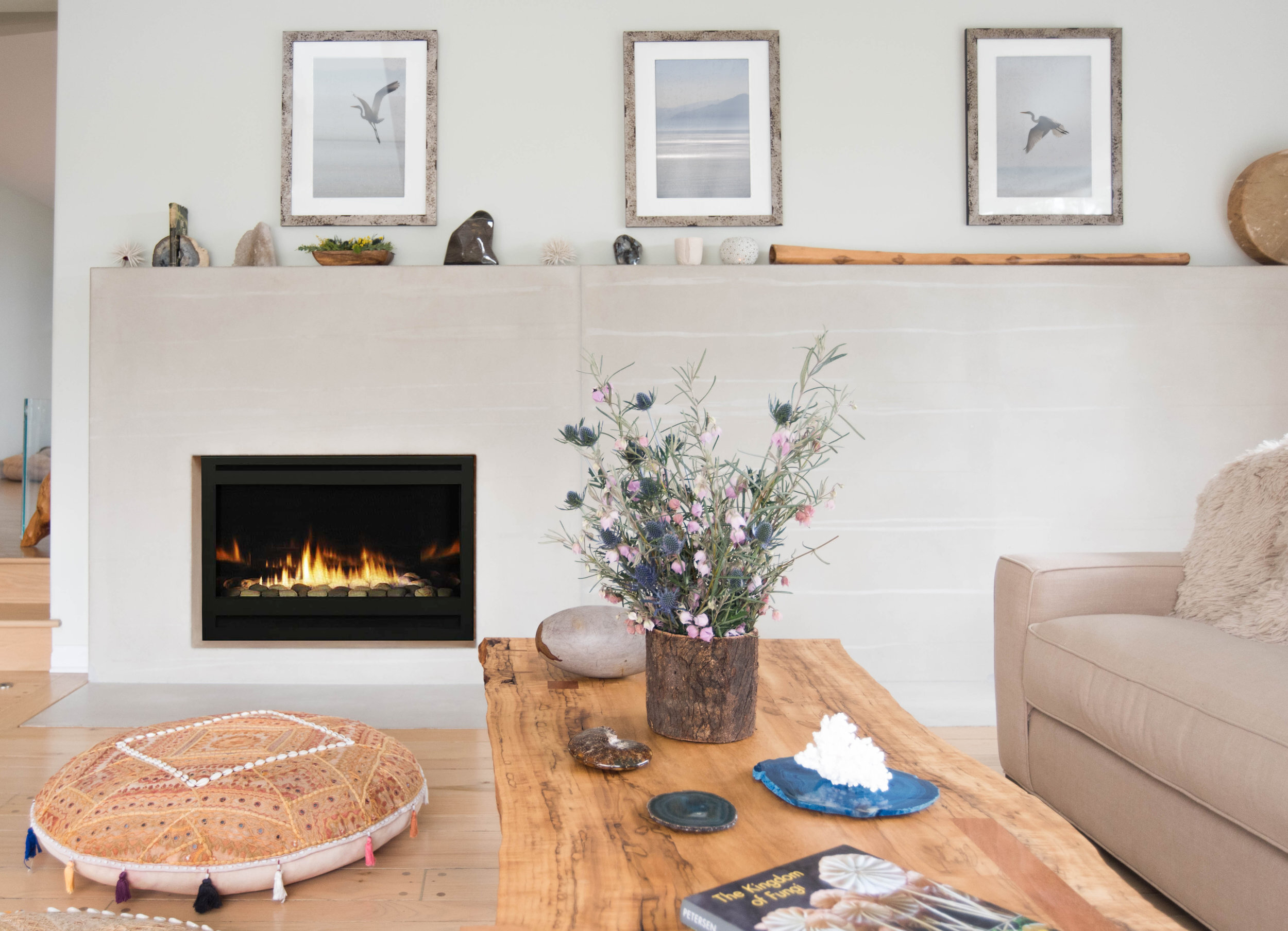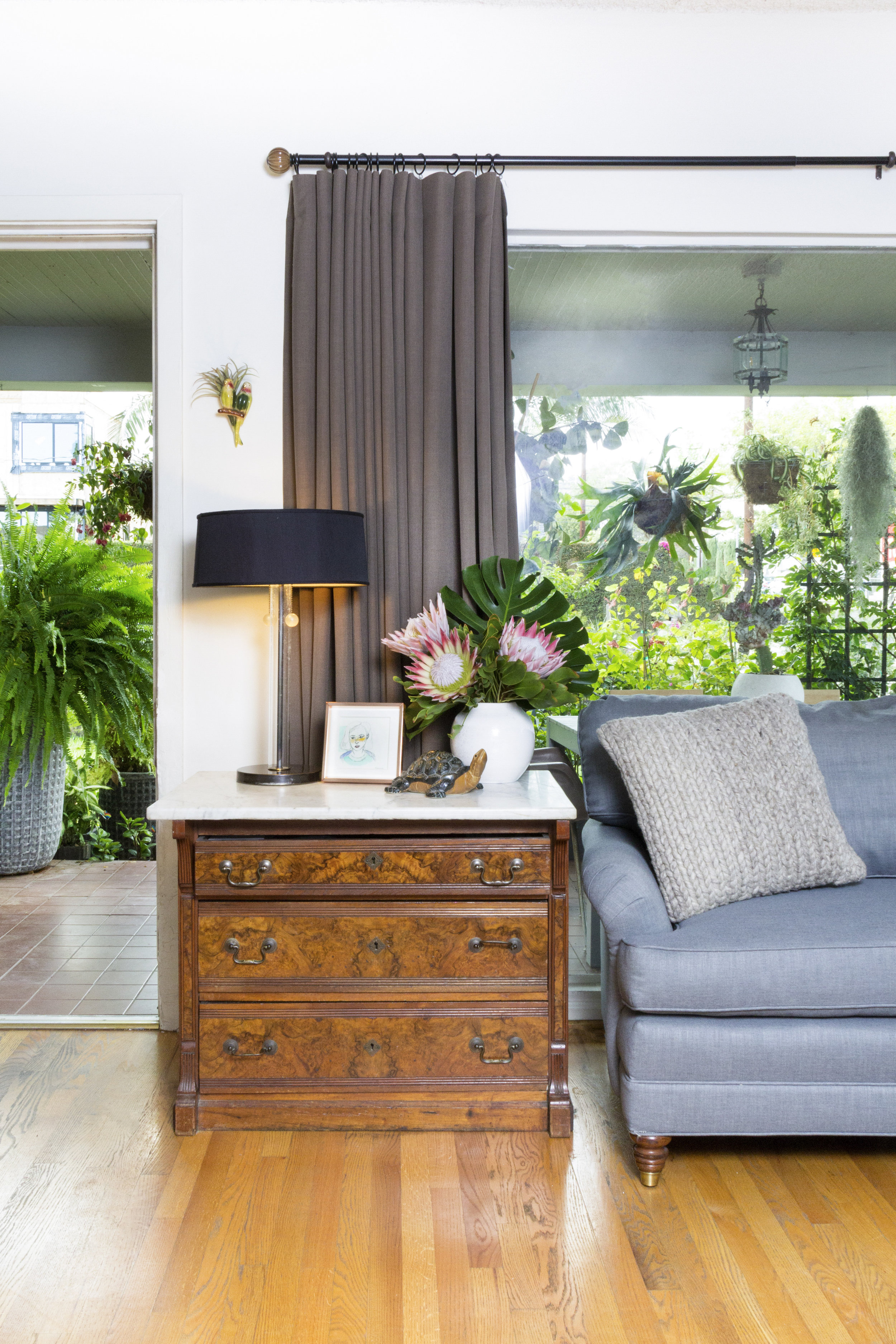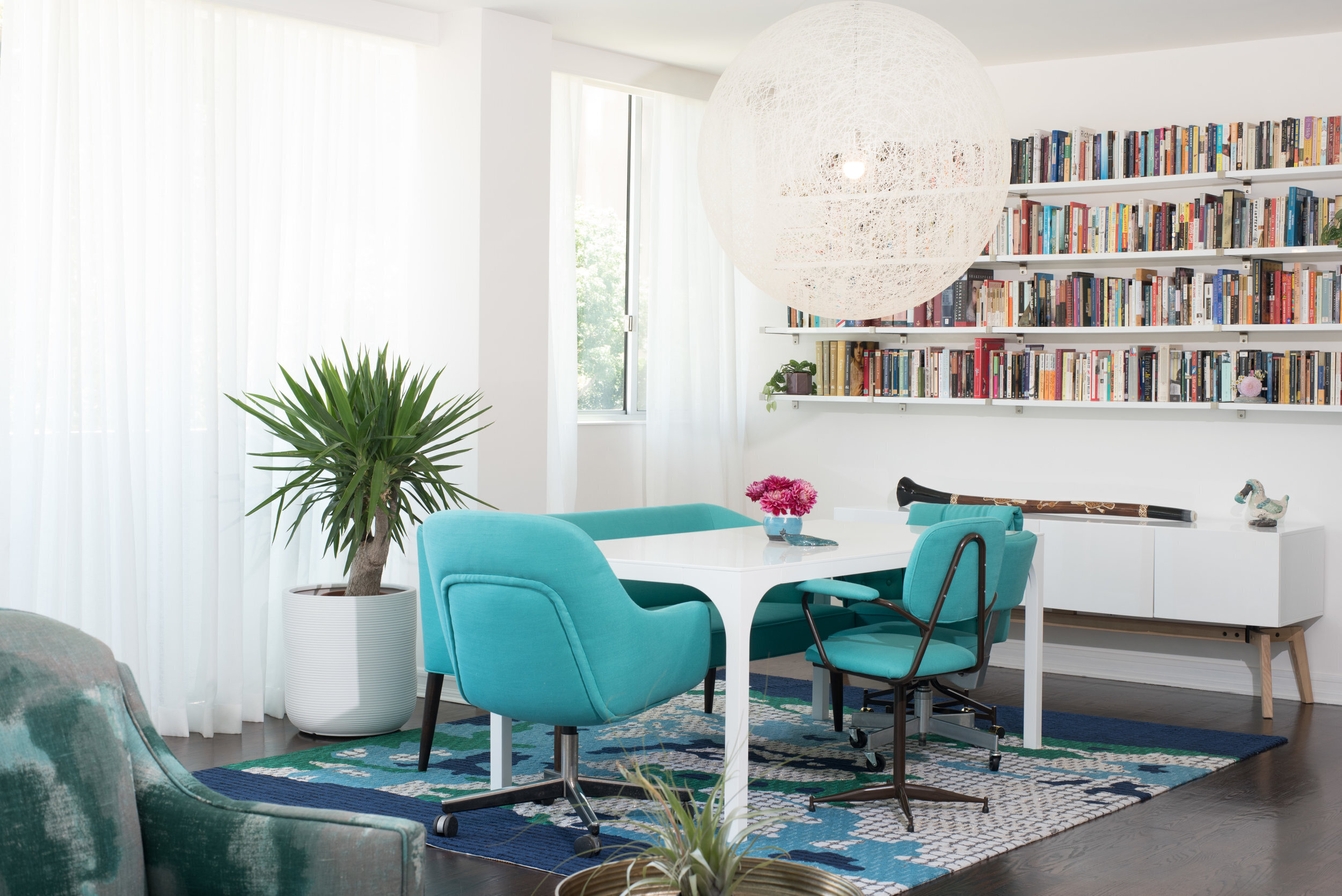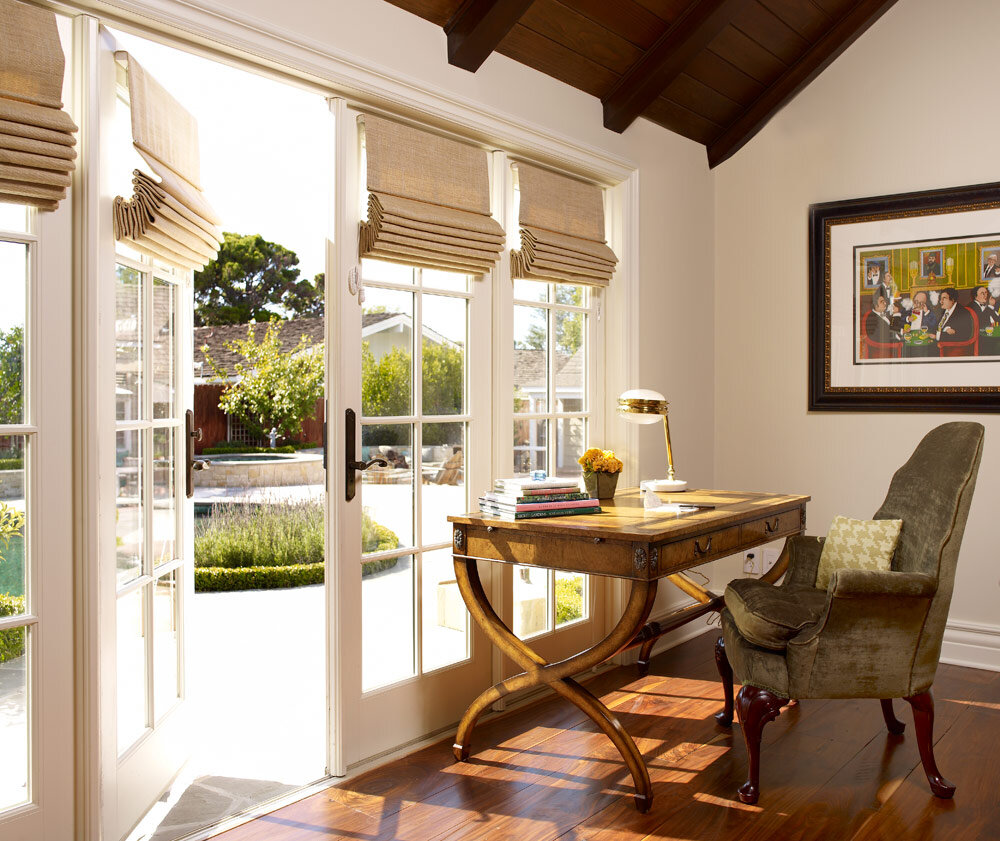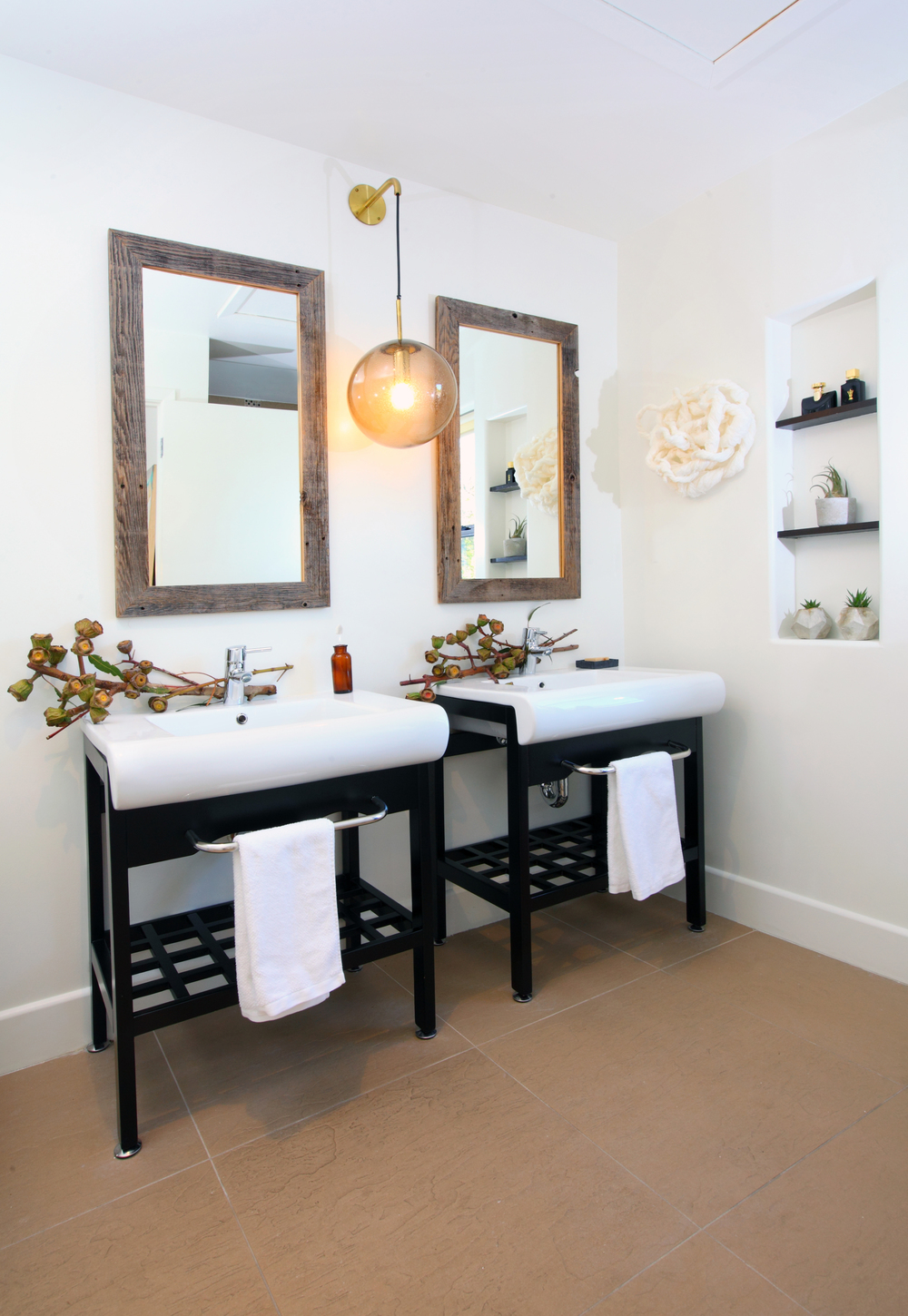Vegan Home Design: Beautiful Beach Style
/Whether surrounded by mountains, forest or overlooking the ocean, California is a unique and beautiful place to live. Spending time in nature through mindful activities such as hiking and birding promotes feelings of happiness and well-being. Elements of the natural environment that surrounds us can influence the interior design of our living spaces, bringing these values of mindfulness and well-being into the home.
In this design concept, Sarah Barnard, WELL AP + LEED AP developed two variations of objects, furniture, and artwork for the entryway of a home by the ocean. All of the materials and objects selected for this home project are Vegan. This option features a deep blue dutch door reflecting the color of the sea and a glass window that floods the space with natural light. These blue tones carry through the room in imagery and forms from the natural world, such as the painting of a Blue Heron installed above the sideboard. This option features a collection of contemporary ceramic objects, such as the stylized flush mount ceiling light and the ceramic lamp that resembles the form of a sea urchin. These objects are grounded by the vintage ceramic bowl and planter containing flowers. The sideboard, made from Danish oiled walnut, offers tidy storage options, while the tone of its wood finish harmonizes with the soothing blue of the room to create a welcoming entrance.
The staircase wall sconce, made from art silvered glass and brass, has frosted edges that resemble sea glass; this produces soft diffused lighting, which contributes to the relaxed and welcoming atmosphere of the entryway.
In this first option for the living room, material elements and colors from the entryway are reflected in the the deep blue Vegan-friendly upholstery and Danish oiled walnut of the sofa. The fine artisanal quality of the exposed wood frame gives the sofa lightness and elegance. At the same time, their shape and placement create an enclosed and intimate environment perfect for relaxation or small social gatherings. The artwork incorporates natural imagery such as water birds and ocean scapes. These elements carry through in the coffee table made from reclaimed hardwood, which features plant life embossed into the concrete surface of the tabletop, all underneath rain drop shaped pendant lighting.
The second option for this entryway incorporates a lighter, sea foam colored dutch door and window. This lighter tone is complimented by the natural wood and white gold finish of a jewelry-like chandelier with crystal tear-dropped glass fixtures. A small geometric ceramic lamp in ocean blue resembles a smokey-cut gem which is complimented by a smattering of vintage ceramics, such as the large bowl and mid-century modern stoneware vase. The landscape painting chosen for this option features a soft blur of brush strokes as if looking through fogged glass to create a calm and comforting space when entering the home. The side table presented in this option is made from natural walnut slabs. The concealed drawer is coupled with visible storage options in the open space underneath, which integrates the walnut finish with the room's white walls.
This alternative living room option also incorporates ocean-inspired deep blue tones within a pair of generous, enveloping sofas whose design creates a soft and comforting aesthetic that has an anchoring effect. The pebble-like milky glass globes of the chandelier create diffused lighting, which is warm and welcoming.
Elements of the natural world are incorporated into this space through the Mapa burl coffee table, which has a form that resembles found wood or stone shaped by the sea. These natural elements continue in the Matilija poppy textile pattern on the decorative sofa cushions which incorporate native Californian flora into the space.
Design concepts such as color, form, material and lighting can be utilized within our home to reflect the beauty of the natural environment that surrounds us, capturing the way it makes us feel, to create a mindful living space that promotes happiness and wellbeing in everyday life.


